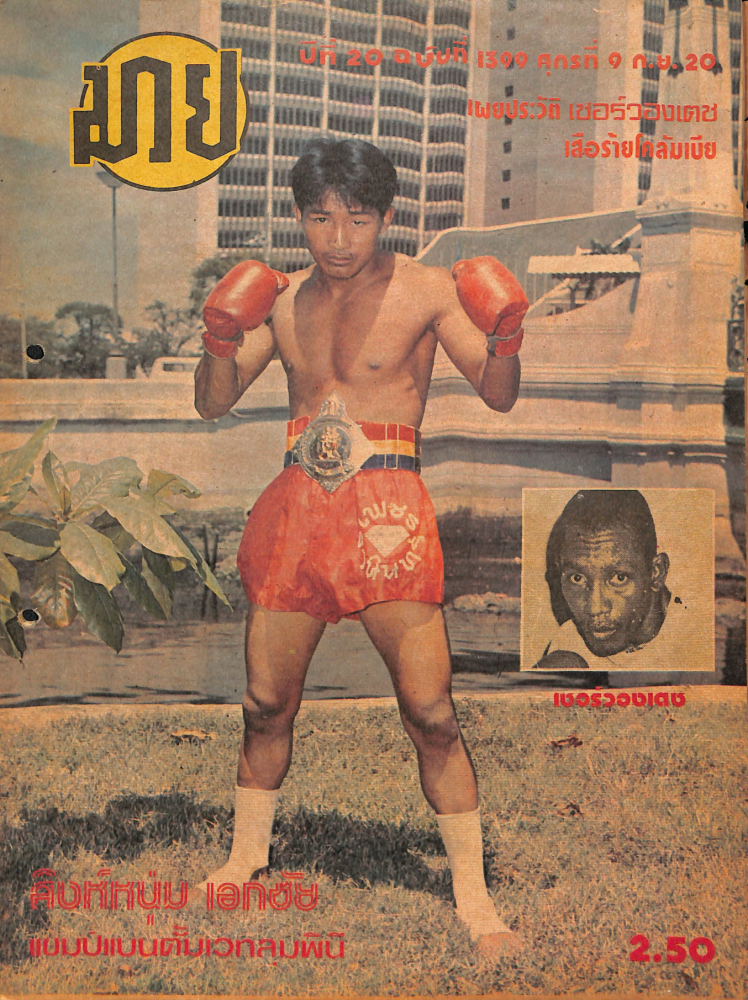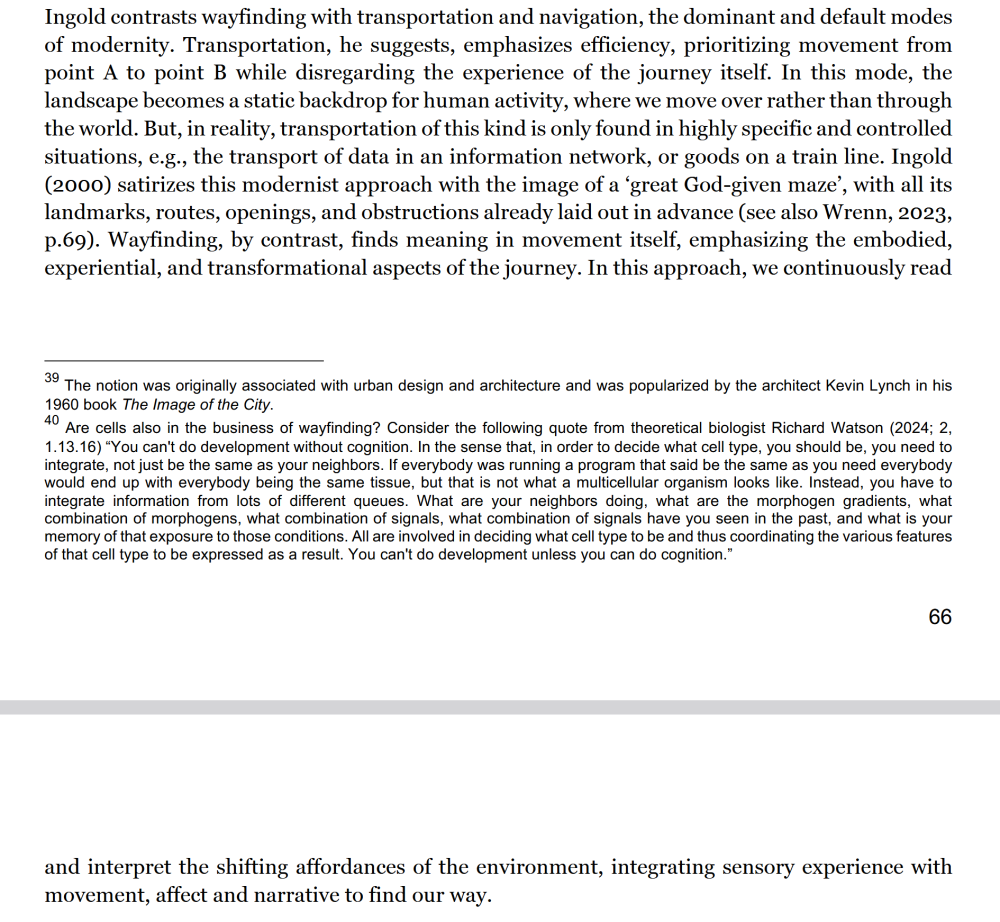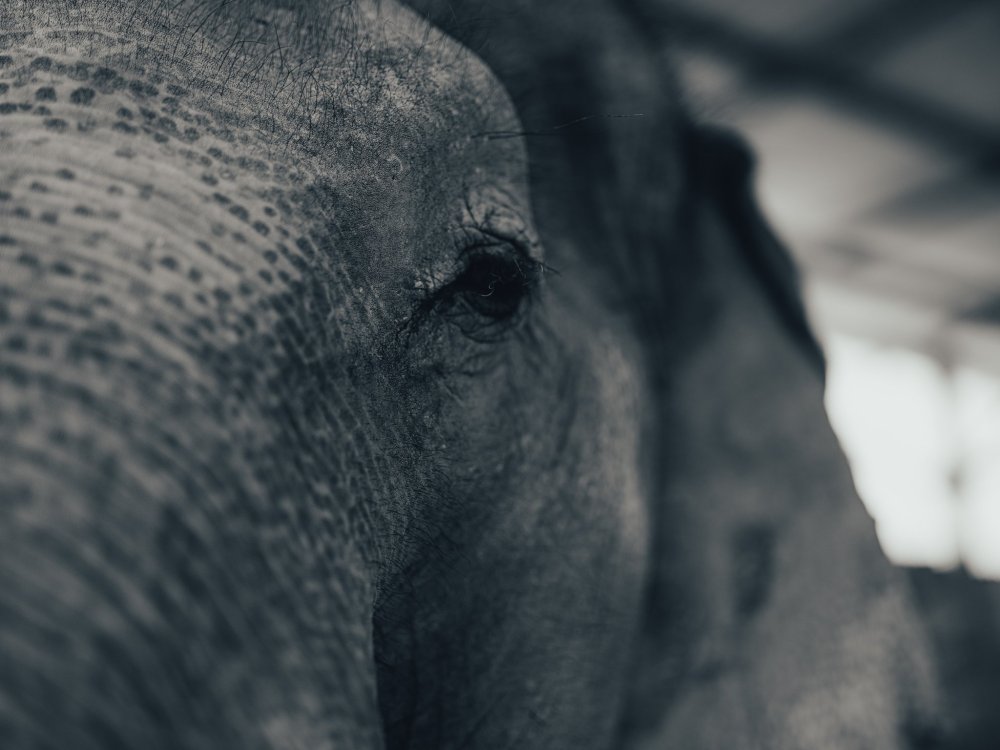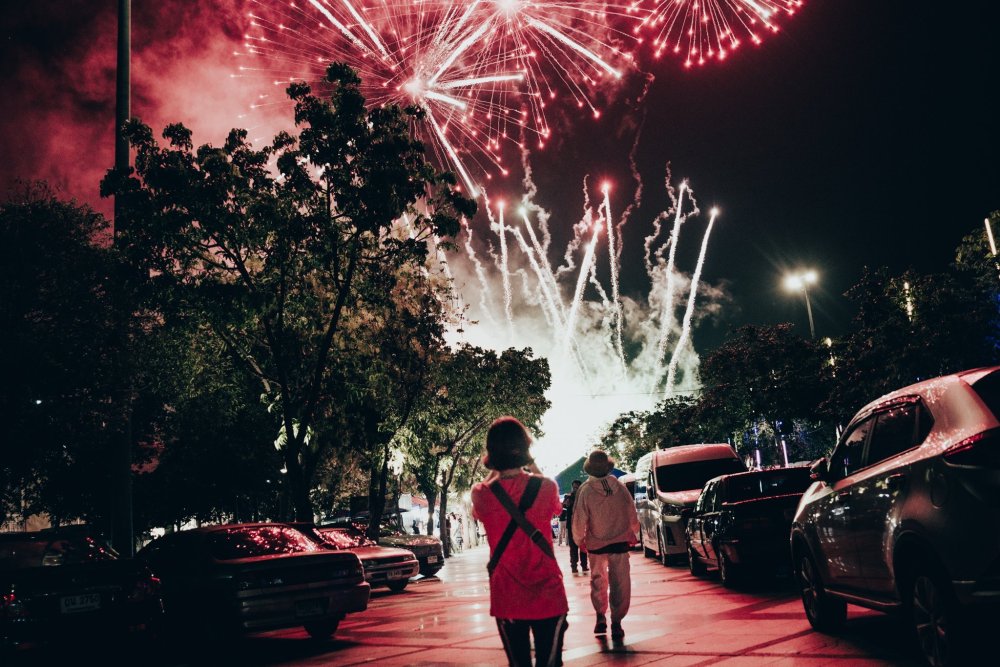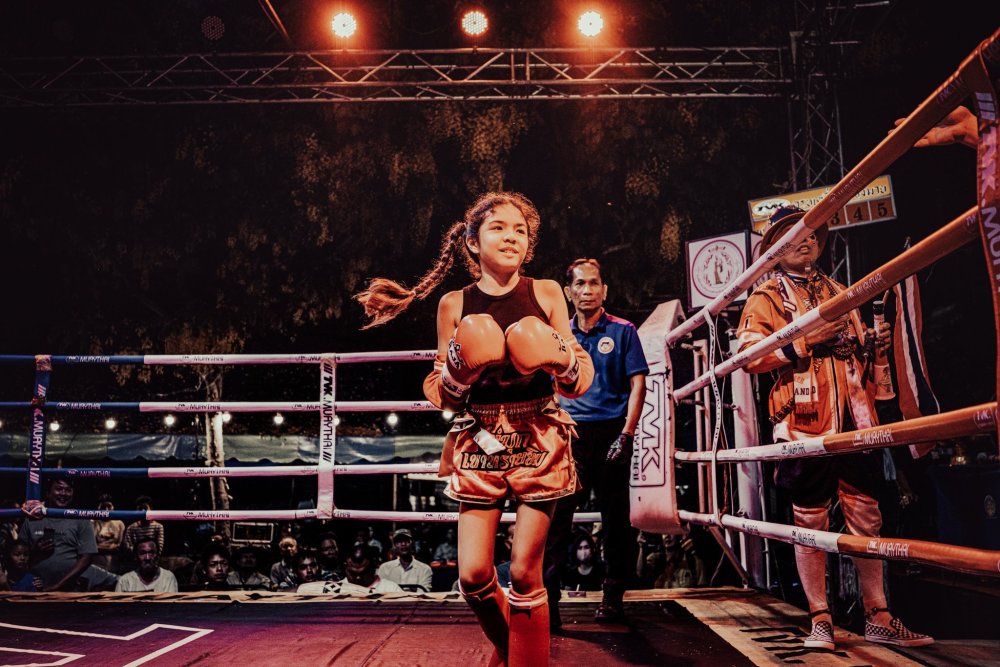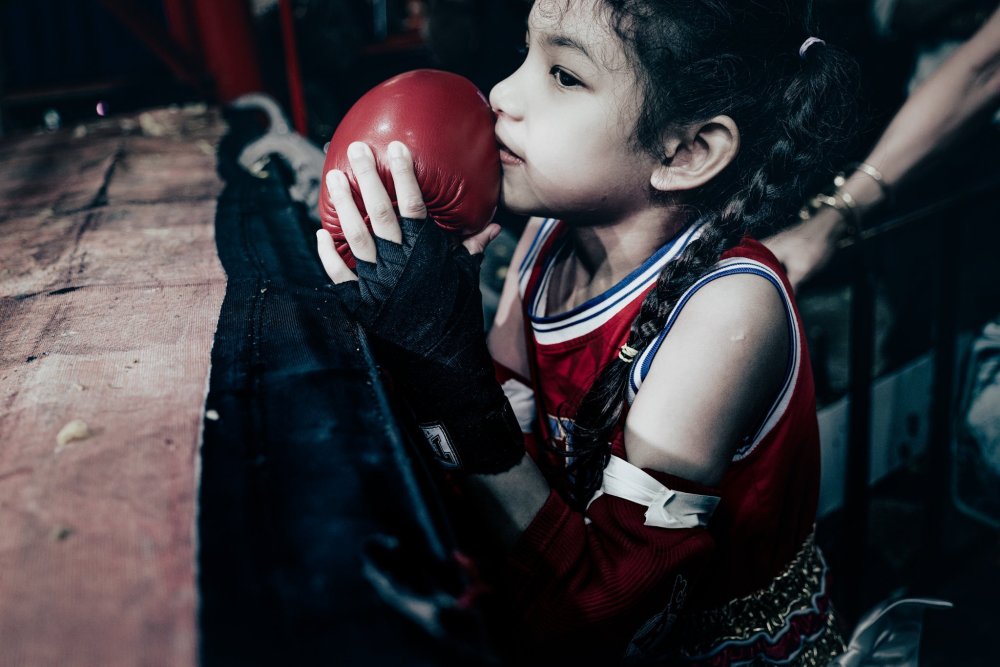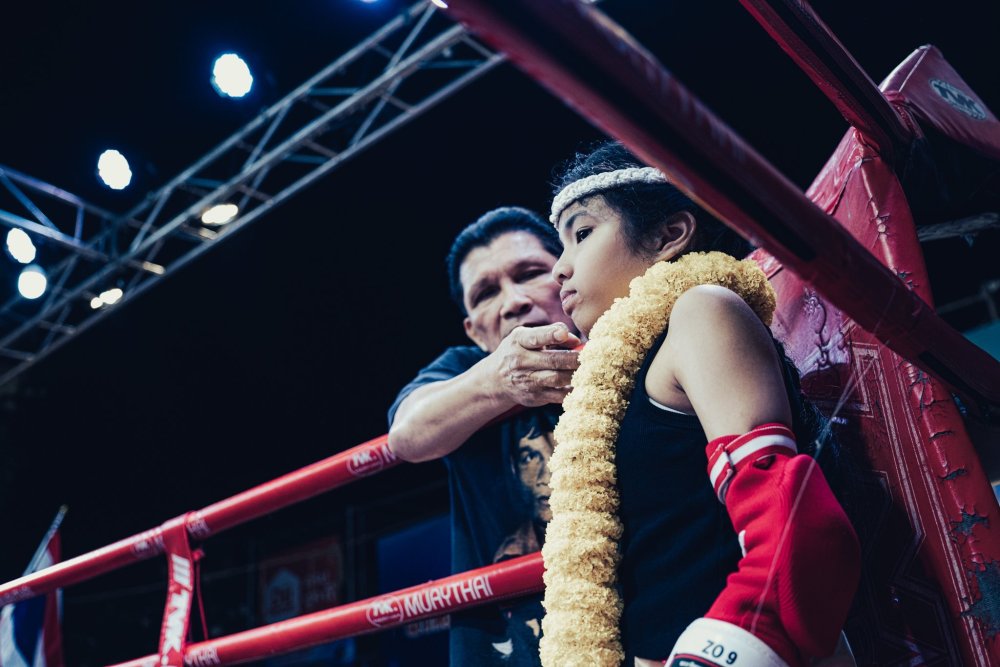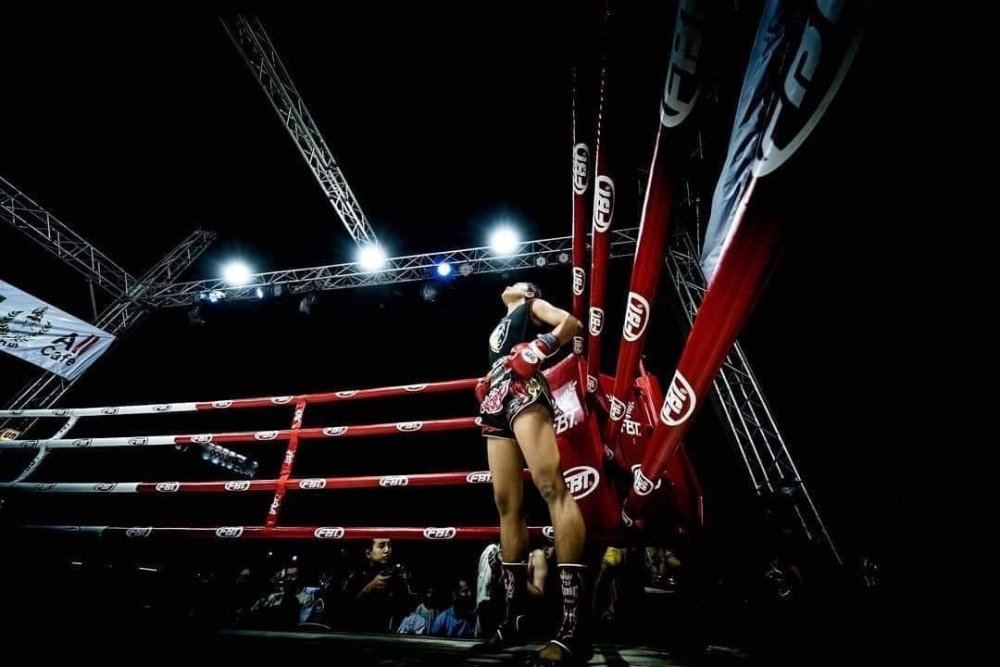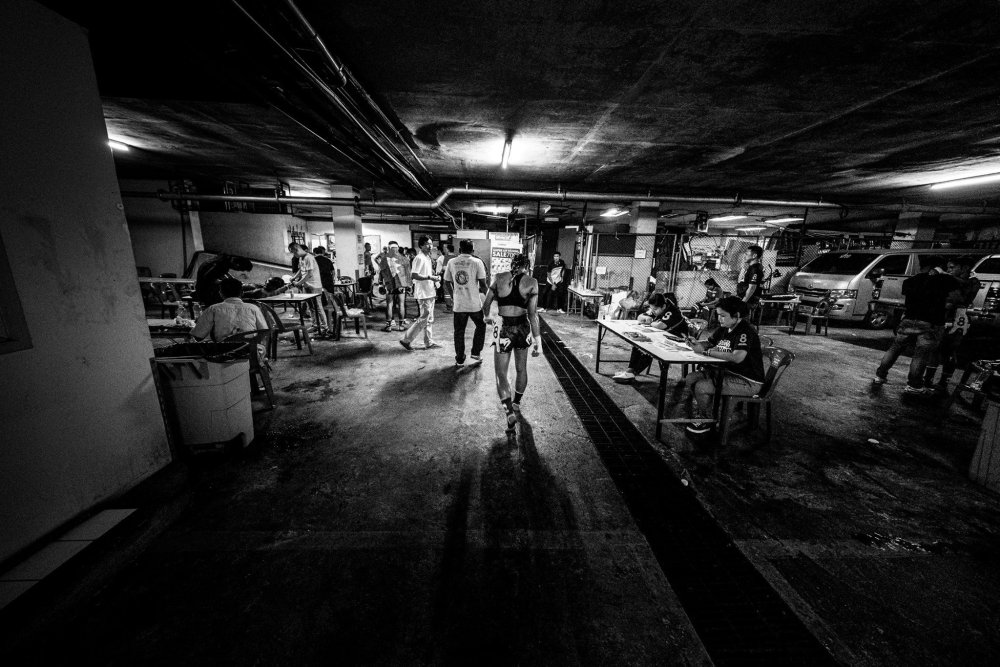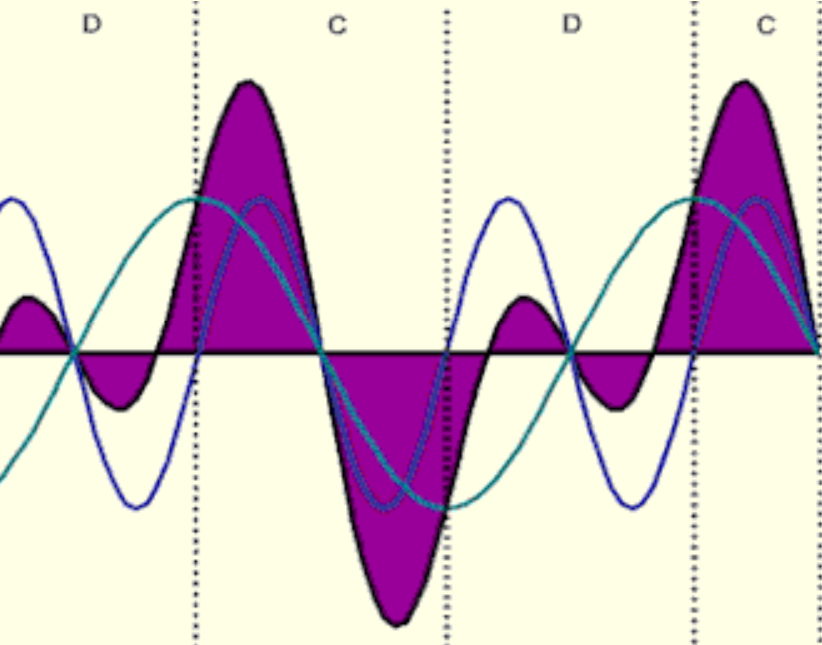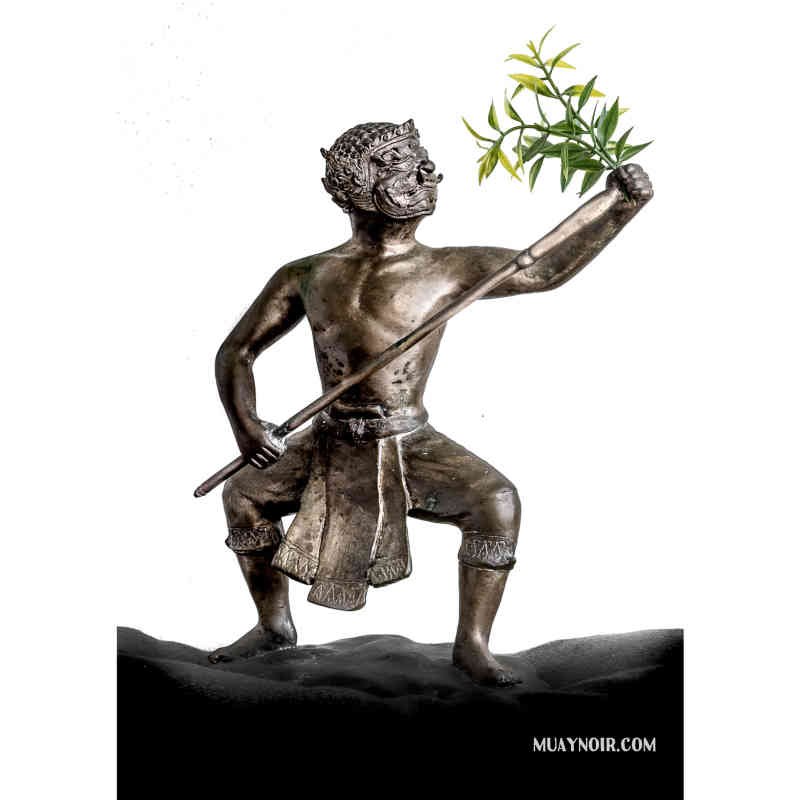Leaderboard
Popular Content
Showing content with the highest reputation since 12/23/2024 in Posts
-
Kevin — this is beautifully written and profoundly resonates with what we are trying to protect. At our gym in Pai, Thailand — led by Kru Sittiphong (Eminent Air, Bangkok) — we often find ourselves discussing this exact tension. The split you describe between aggression as war and tradition as festival maps directly onto the current shift happening in Muay Thai today, especially in the growing clash between Muay Farang and traditional Muay Femur. So many Westerners arrive here asking for two sessions a day, intense sparring, and "hard training" to burn through their fire. They believe output equals progress — but they miss that in Thai Muay Thai, form comes before fire. As Kru says, “If no one corrects your technique, you're just burning energy and money.” You can train for years and still lack timing, balance, and control if no one slows you down. He calls this rush-to-power style "Muay Farang." Not in judgment — but as a cultural observation. It’s mechanical. It’s linear. It seeks transformation through depletion, rather than refinement. It forgets the smile in the sparring ring. The mutual game. The moment when two fighters laugh and say, “You got me.” That ease is the solarity. That’s the festival. Lerdsilla, Saenchai — we show students how they move not to win but to shine. Their movement is gift, not dominance. We see this in our students too — that knife’s edge between aggression and release. Some say they want to spar to “let out the fire.” But this isn’t the Thai way. Not really. Not the artful way. Real Thai Muay Thai is not made in war. It’s made in play, in rhythm, in control, in beauty. Muay Thai was born out of community, not conquest. The rings were surrounded by farmers, not fighters. And even now, the countryside promotions like Pai Fight Night are pushing back against the gambling, the scoring controversies, the drift toward aggressive spectacle. They are preserving Muay Thai as cultural heritage — as festival, as you so eloquently say. Even the structure of Thai training reflects this longevity: one thoughtful session a day, not burnout. Recovery built in. Years spent mastering balance before layering in power. It's a slow art. A patient art. It cannot be "hacked." And it cannot be copied in systems that don't understand its roots. So yes — we’re witnessing a shift. And some, like Samart Payakaroon, are trying to protect the tradition. Others, like the Muay Femur stylist who left ONE Championship, are quietly walking away from the pressure to perform brutality over brilliance. We believe this conversation matters deeply — and must continue. Thank you for holding space for it, — Jennifer & Kru Sittiphong Sittiphong Muay Thai - Technical Muay Femur Training Pai, Thailand2 points
-
What many do not realize is that ONE has so thoroughly commandeered the social media ecosystem of Muay Thai in Thailand (quite consciously, as part of its marketing approach, absorbing trad social media accounts, controlling messaging across all platforms through various systematically means...and quite brilliantly I would say), that many, many New Gen Muay Thai fans in Thailand, who speak no English at all, now have bought 100% into the ONE Entertainment full power smash aesthetic. Demographically much of it is somewhat a new fan base for Muay Thai, but its very vocal in SoMe post comments, and has influenced the older online gen as well. What we in the West are drawn to in traditional Muay Thai is now is ardently being pushed against by a segment of Thai fandom now, even in the trad ruleset. There is a kind of tug-of-war now between the traditional values of superior fighting and the new International smash values, and hybrid promotions like RWS are kind of caught right in the middle, but seemingly for now siding with trad values for the most part. It does mean though that some trad fighters are just going to go in there and smash on trad cards, which is kind of amazing because this change has occurred in only a few short years.2 points
-
A Battle of Affects I've argued that the highly Westernized (Globalized) affect expression in ONE and other Entertainment Muay Thai, typified in the Scream face you'll see in fight posters (which sometimes ironically looks like a yawn) and in post fight celebration, expressing aggro values that work against the traditional affects of Thailand's trad Muay Thai, a fighting art that comes out of Buddhistic culture largely organized around self-control...(that's a mouthful!) is attempting to invert Muay Thai's relationship to violence itself. It is interesting that spreading in the trad circuit is this mindfulness/meditative post-fight victory pose, an example of which is here, the young fighter with his trainer. This is no small thing because arguably culture is made up of prescriptions of "how you should feel", largely expressed in idealized body language and facial expression. When you change that prescription, in fact inverting, you are challenging the main messages of culture itself. One of the gifts of Thailand's traditional Muay Thai, I have discussed, is that it provides a different affectual understanding of violence itself, which then cashes out in simply more effective fighting in the ring. Something of a gift to a world that is more and more oriented toward rage and outrage.2 points
-
above, festival fight in Pattaya Just some thoughts and observations on the overall state of Thailand's Muay Thai. Not an expert opinion, just an informed perspective. The title of this piece may sound absurd, or maybe for some just an exaggeration, but there is among some long time fans who have watched a lot of Muay Thai in Thailand the sense that the only Muay Thai worth watching in Thailand now, in terms of actual skill, is Muay Dek, the Muay Thai of Thai youth. This piece about why that may be so. There is a sense that Muay Thai has been stretched now in two directions. You have Bangkok stadia, gambling driven traditional Muay Thai, supposedly the acme of the country's traditional talent, and you have Entertainment Muay Thai (with various versions of itself), a Muay Thai that is bent towards - and in many cases just FOR - the foreigner. If I was to really generalize between the two, one line of Muay Thai heads toward more "technical" point fighting and fight management (trad stadium Muay Thai), fights where fighters and corners are always responding to shifting gambling odds, and on the other hand a Muay Thai (in the extreme case of ONE) which is all about combos, aggression and offensive risk taking, emphasizing trades in the pocket and knockouts. The problem is, neither trajectory is very skilled (at least in the historical sense of Thailand's greatly skilled fighters). Muay Thai has become increasingly deskilled, along these two trending branches. And, if you mostly watch one of the two, you might not have noticed the deskilled aspects, because this is just the "new normal", and competition always produces winners who seem in comparison to others, quite skilled. It's only when you take the wider view, not only of the history and greatness of the sport, but also of the present state of Muay Thai itself, importantly including Muay Dek, do you see the drop in skill in adult fighting...as each promotional style squeezes out certain qualities from their fighters, cutting off their full, expressive development. Even with big sidebets on fights (gambling), and seemingly lots of pressure, Muay Dek fighters fight with great freedom. Some of this is a mystery why this is lost, but what follows is a sketch of how Muay Dek fighters change and become limited once they reach a certain age. Why Are the Muay Dek Fighters the Best Muay Thai Fighters in Thailand? If you just watch a few fights, and you have an eye for it, you'll see it. In a word, freedom. In another word, expressiveness. And still an third, sanae (charm, charisma, a key component in Thai traditional scoring). The Muay Thai of the Golden Age (1980s-1997) was filled with highly skilled, very well-rounded, but importantly very expressive fighters, fighters who fought with experimentation who were constantly adjusting to their opponent, drawing on styles and tactics that could in shifts change the outcomes of fights. And in fighting in that way that exuded personality, uniqueness and charm...aura. Much of this quality, and flexibility is gone from Thailand's Muay Thai, but in today's Muay Dek some of it is really still there. Its only when these fighters get to a certain age...maybe 15-16, that it starts to become squeezed out. In the Muay Dek even of today you get fighters who are regulating their energies with great subtitle, not swinging between overt passivity or over-aggression, fighters engage more continuously in the classic style, with fewer ref breaks, less stalling, fighters drawing out extended phrasing and highly technical defensive stretches that endure. A greater variety of weapons, and even transitions between fighting styles or a shifting of tactics, to solve what is happening in the fight, a kind of cerebral aesthetic that older fighters seem to have lost the capacity for. At the highest levels of Muay Dek youth fighting you see dimensionality...and personality. There is much less nibbling at leads. Instead one sees that leads are vied for more or less continually, and expanded when achieved, without devolving into hyper-aggressive mashing. I'm going to leave Entertainment Muay Thai to the side for now, especially ONE which is its own particular excessive exaggeration, mostly because its kind of obvious how promotional hype, booking dynamics, rule-sets and bonuses shape fighters to fight in a certain more limited way. What many may not realize is that trad Muay Thai in the stadia also forces fighters to fight in a certain way, in many cases simplifying or pairing down what they had been capable of when developing as youths. I'm going to say "gambling" here, but gambling is not the boogieman monster that a lot of online commentary makes it out to be. Gambling in Muay Thai is essential to its form, in fact I don't think Thailand's Muay Thai would have reached the complexity of its art without ubiquitous gambling, all the way down to the 1,000s and 1,000s of villages and provincial fight cards, its ecosystem of fighting, which have gone on for maybe centuries. Some of the discussion of the importance of gambling I discuss speculatively here: above, festival fight in Buriram The problem isn't "gambling" per se, but rather that in the larger venues in Bangkok because of the changing (eroding) demographics of Muay Thai the shift of economic power to big gyms, and the dwindling talent pool, the powerful forces of gambling interests have lost proportion, and now have outsized impact. There are not enough counter-balancing forces to keep gambling's historically important role in Muay Thai's creativity, in check. These have worn away, leaving gambling as too prominent. But, I'm not talking about corruption here (which everyone loves to turn to with an infinite finger of blame). I'm actually talking about the way in which Muay Thai is traditionally fought with fighters responding in a live sense to the shifting odds of the audience. Online gambling has complicated this more human, social dimension of the sport, abstracting it to 1,000s or 10,000s of people of varying interests and even knowledge, on their mobile phones. The demographic of "who" gambles has changed, and increasingly people are gambling who have less knowledge about the sport. They'll place a bet on Muay Thai just as they'll place a bet on a football game. Again, let's bracket, let's put the online nature of gambling to the side, and just talk about the traditional relationship between live fighting and live in-person gambling in the stadia. The fighters are fighting TO the odds. The odds are the "score" of the fight, just like in basketball you could look up to a scoreboard and see the score of the game, in Muay Thai you can look to the odds and (roughly!) know the score of the fight. There may be distortion in the odds, whales and their factions of one sort of another may be putting their thumb on the scale, but there is a symbiotic discourse happening between live gambling and the fighters (and their corners). Some of this traditionally has produced great complexity of skills, the ability of fighters to not just "win" the fight in terms of points, but also manage the fight, in stretches, shaping narratives. But today, the exact opposite is happening. Gambling is deskilling traditional Muay Thai, in large part because the small gyms of Thailand - the gyms that actually grow all the fighters, feeding the talent of Bangkok - have been eroding. Not only have they been disappearing (there are far, far fewer of them), those that exist still have no political power in the socio-economics of the sport. When fighters of small gyms enter the gambling rings of Bangkok, not only are they doing so on a very fragile line of income, often losing money to even bring their fighters down, they can no longer bet big on their fighters to supplement fight pay. Betting on your own fighter was once an entire secondary economy which grew small gyms and encouraged them to create superior talents. If you had a top fighter he could be a big earner not only for the gym, but also all the padmen krus in it, aside from fight pay. Because small gyms have lost power overall, political power, they have to live at the margins, which means their fighters have to fight extremely conservatively so as to not be blamed if their fighter loses. They need the backing of the social circles of gamblers. If you lost, it can't be because you took a risk. And because big gyms are going to win (force through political weight) close fights, small gyms have to practically walk on egg-shells in the way that their fighters fight. Generally: get a small lead...and once you have that lead protect it at all costs. Don't do anything risky to expand the lead. And, because small leads are easily lost, fights often turn into a series of nibblings, with both fighters protecting their tiny leads, back and forth. They aren't trying to win, they are trying not to lose. This form of fighting has transmitted itself to big gyms, is the new traditional form of fighting. Don't risk blame. This aspect of "not my fault", "defend a small lead, take it to the end of the fight if you can (5th round), make it close enough and then blame politics or corruption if you lose" has become a normalized style of traditional fighting, across venues among adults. Some of this is because the current state is an out of proportion exaggeration of the truth that traditional Muay Thai fighting always has been expressive of political powers and social capital struggle in hierarchies outside of the ring. Fighters ARE part of and in the ring express social networks. This is part of Muay Thai's social dimension and cultural anchoring. It's just that with the erosion of the powers of small gyms, the dilution of the talent pool, the hoarding of limited talent, has pushed this aspect too hard, and distorted the sport, draining it of skills and its renown complexity. To give a small anecdotal example of how this deskilling works, I remember when a smallish gym was training a fighter, and in padwork the fighter switched to southpaw, just experimentally. No! The answer came back from the kru, and they related a story from the past when one of the gym's fighters had switched to southpaw in a fight and lost. The gamblers who bet on him were furious. He had "blown" the fight. The gym had lost face. From this single event, probably a fight not of much consequence, the gym now forbade switching. It could cost you a fight. An entire branch of Muay Thai (that of switching) was cut off from that gym's fighters...forever. Not only in terms of that technical branch of development, the whole spirit of experimentation and creativity was closed off. The goal was: get a lead...keep it. Don't develop a style that is complex, or varied. Don't do anything in a fight that IF you lose, the gamblers who backed you will blame you and the gym for. This is deskilling. one reason why Thai fighters have been the best in the world isn't just that they have trained and fought young. It's also that they have been at the apron of fights, watched the shape of the traditional aesthetic, socially absorbing a great deal of fight knowledge. At the rope, even as cornermen or impromtu coaches. Its not just the doing, its the participation in the Form of Life that is traditional Muay Thai, bringing a depth of IQ. As small gyms and kaimuay across the country lose power in Bangkok, social power, they have to exist in very narrow economic margins, which means that technique wise their fighters have to fight in very narrow lanes. The spontaneous and the creative is too risky, because gyms don't want to be blamed. Fighters cannot explore or develop new ways of winning fights. There is a secondary dimension in this, as the downfall of the Thai kaimuay is told, which is IF a small gym does produce a particularly strong talent, this talent will not become a resource for the gym, adding honors to the gym (championship belts, etc), growing the gym through his presence. Instead, if you produce a talent this talent will be ostensibly stolen from you. Not outright stolen, but you will be pressured to "sell" their contract to a big Bangkok gym. This pressure will usually come from the fighter's parents, who want success and fame for their son, and the esteem of a bigger name, and it will come from within the hierarchies of the sport. The sale will happen. Instead of a developed talent adding to the richness of a gym's culture and growing their talent own pool of younger fighters who want to share in the glow of gym success, instead you'll be financially compensated with a contract sale. Some money in the pocket, to the gym owner, but not the kind of verdant growth a talent would have brought in the past, something that would shine across all the krus and padmen, and younger fighters in the kaimuay. And, fighters now are being extracted from small gyms younger and younger. The comparison is fruit being picked from trees more and more less ripe. Not only are fighters in general entering the Bangkok stadia with far less experience and development in the past, fighters are also being swept up by big gyms at a much higher rate, at an earlier state of their development. The ecosystem of the small gym, 100,000s of them, is being starved out. And its that ecosystem that historically had produced so much of the foundational complexity that gave Bangkok fighting so much of its renown diversity. Fighters that entered Bangkok stadia used to be much more complex and experienced, and then once they got there the complexity and experience of that scene increased and amplified them, spurred them to greater growth. Now, its the opposite. Arriving in a Bangkok stable may very well nullify your potential. We might add to this that the large big name gym stables of Bangkok today, that have swept up much of Thailand's diminishing promising talent, concentrating it, have become more like holding houses of that talent, and fighter factories for promotions, and less like developmental houses as old Bangkok gyms like Muangsurin, Thanikul, Pinsinchai, Dejrat, Sor Ploenjit had been, promotion favorites which maintained not only a kaimuay developmental creativity, but also more lasting connection with provincial sources. Muay Dek and Facing Power So, the good news is, despite all these forces against creativity, against small gym development, Thailand is still producing very high level Thai fighters from youth. These fighters fight with complexity and freedom, full of sanae, technical excellence, narrative control, quite different than their older counterparts who have learned to strip away their individuality attempting to preserve leads in gambling's stadium Muay Thai. I'm not sure what to account for this other than to believe that Thailand in its heart still maintains the aesthetics and richness that created the acme of the sport in the Golden Age, these qualities haven't been stamped out yet...it is only when fighters get to a certain maturity, when they are fighting for gamblers without a lot of social power themselves, protecting tiny leads, that they lose these qualities. They become deskilled. There is another element to the mystery of why these Muay Dek fighters lose their skills when they age. Kru Gai at Silk tells Sylvie: It's easier to be femeu when everyone is low weight, and nobody has power. Muay Dek fighters develop all this complexity because there is no "power" consequence for their experimentation at low weights. And one can see how this makes a serious amount of intuitional sense. Gamblers today favor more "power" in Muay Thai, so femeu fighters enter contexts where suddenly there are consequences that limit what you can do. But, if you take a moment to think about it, femeu fighting youth of the Golden Age also once they hit a certain age encountered "power" in opponents. But, instead of losing their skill sets at maturity, they actually grew as fighters, became more complex, more creative, more effective...against power. Someone like Karuhat was fighting up two weight classes in the 1990s, a very femeu fighter, against very powerful opponents. It's can't be that encountering the maturation of "power" is the thing that is shutting down the development of the youth, who have already developed so much prior. In fact, there seems a rough parallel between artful youth fighters of the Golden Age and now. Both of them hit this "wall" at a certain age. But in the Golden Age this accelerated their growth, today it stunts it, and even regresses it. I suspect it has to do with the overall conservative form of stadium gambling Muay Thai, the entire incentive and punishment system that produces a lot of tiny-lead chasing...and this goes back to the dis-empowerment and erosion of the small gyms that feed the sport, developing the fighters. The best fighters in all of Thailand are the Muay Dek fighters. It is the closest thing to a natural lineage with the greatness of the past. But right now...there is no way forward for them. No way for them to allow their expressiveness of character and technique to expand and not be disciplined into submission, dulled. They have to face the trad conservative ecosystem, or have to turn to the hyper-aggression of entertainment promotions, each of which robs them of a vocabulary of control and expression.2 points
-
A lot of these thoughts of several years came together for me in side conversation with Arm of Muay Thai Testament Instagram who is looking to perhaps put together a project around Muay Dek fighters of today. I asked him if he could link some present Muay Dek fighters on the rise. This is what he wrote, posted with permission, posted in a series of replies: Strong Muay Dek Fighters Today 1. I was rewatching one kid this morning, as I do with all the kid fights that gets good reception, and this kid from some gym I've never heard of is so good femue. I think the gym is a new addition to Petchyindee's roster now. His name is Kaona Jor. Nopparat The part about Femue being easier to execute at lower weight is so true. Regarding the examples, I only really know the Petchyindee ones but here goes. In no particular order: 1. I was rewatching one kid this morning, as I do with all the kid fights that gets good reception, and this kid from some gym I've never heard of is so good femue. I think the gym is a new addition to Petchyindee's roster now. His name is Kaona Jor. Nopparat2 points
-
This perspective is related to our manifesto of values and a priority on provincial fighting in Thailand.2 points
-
The first fight between Poot Lorlek and Posai Sittiboonlert was recently uploaded to youtube. Posai is one of the earliest great Muay Khao fighters and influential to Dieselnoi, but there's very little footage of him. Poot is one of the GOATs and one of Posai's best wins, it's really cool to see how Posai's style looked against another elite fighter.2 points
-
The championship fight was such a perfect illustration of "basics make champions." Not fancy, not showy, just incredibly solid foundations.2 points
-
This was their fight back in August, where Marie pulled out the upset. I believe Marie was a last minute replacement in that fight. Useful to compare the fights.2 points
-
This was just a really wonderful performance by Barbara, on so many levels, for the RWS Raja belt. You could feel her training in her fight, the way she stays within herself, at surface a very basic approach in terms of weapons/style, but underneath it all is a very important thing that not a lot of Westerns understand. You fight WITH Space. And she persistently denies Marie the space she wants, it ends up blowing up the fight, especially because she brought with her a beautiful very deep, head-sink clinch lock that Marie had no answer at all for (and that Raja let her work from, thank goodness). I have to watch the 2024 fight where Marie upset her in the clinch, but in this one Barbara was loaded for bear. This is the same recipe Sylvie used to beat so many, especially bigger opponents. You fight the Space, not the opponent. And you fight your fight with the belief "If I fight my fight, my way, the right way, you are going to have a very difficult time". I also loved Barbara's 20% - 40% power hands, just using them to touch and semi-pop Marie, to stress the space. No mindless, 100% power combos, actually seeing one's way in the space, and touching the opponent. This is just glorious controlled dern Muay Thai. Barbara's lock was so pure, so good - with a very deep head sink. She also had something that a lot of locking fighters fail to do. Once locked you walk your opponent. Not only do you pivot, or pull, you drag and also literally walk them so that their feet cannot set, so you tangle them, breaking the line of counter control. This is advanced, developed stuff and great to see. A lot of Thai stadium fighters of today don't even do this, its part of the eroding art of clinch. She also was very aware to drag Marie off the ropes so the ref break doesn't come and she could paint longer pictures of her lock dominance. Small touch with big awareness and effect. I don't really understand why Marie decided to fight this fight as a pure femeu fighter, back to the rope. I have to watch their first fight, but this plays exactly into Barbara's closing style. I imagine this is something trainers have been moving her toward? I'm not sure. A very cool, very worthy victory.2 points
-
You could just pick a high-level gym in a European city, just live and train there for however long you want (a month?). Lots of gyms have morning and evening classes.2 points
-
Muay Khao in Padwork - note a little bit advanced stuff Talking a little more about Muay Khao training (and padwork), beyond some basic things like the padman doing rounds of "latched on" work where you trailer hitch and continuously knee or work into knees, there is a shape to Muay Khao that involves building up the fatigue in your opponent, which involves continuous pressuring and tempoing early on, nothing rushed, importantly with the mentality of depositing fatigue. Even if you don't have a padman aware of this, you can do this on your own, of your own device. People do not think much of manipulating or effecting your padman, but taking cue from David Goggins trying to mentally break his SEAL Team trainers, you can use your padman's energy managements to become aware of their fatigue, tempoing up or displacing them when they start to manage. This builds up your own sense of perception, becoming acutely aware of its signs, and developing responses, things that will serve you well in fights. This doesn't mean going HARD, like 200%. It means managing your own fatigue while you work that edge and tax your padman. The purpose of this is to slow reaction times and decision quality in later rounds in fights. You don't win fights early in Muay Khao work, you prepare the material so you can work late. A great padman will see and help you train this shape of the rounds, even as they manage their own fatigue. It goes without saying this involves not just "following along" with called strikes, which I believe is detrimental on a deeper level, because what you are training in those cases is "being dictated to". Lots of fighters have this problem, they have spent countless hours of (unconsciously) learning to be steered, so when their opponent looks to dictate timing, space or rhythm they have years of being comfortable being dictated to. This though is a subtle line to walk, and it depends a great deal on the experience of the fighter and the quality of the padman. Ideally, you want padwork to gravitate towards a dialogue, a back and forth, which mirrors the dialogue of fighting, accepting dictated tempos and spacing, modifying them, shaping them in return. Good padmen (who aren't just burning you out with kicks or holding combos over and over, largely ex-experienced fighters) will recognize this dialogue dimension, and you'll bring out more of their "fighter energy" and creativity, which is Golden stuff. Lesser experienced padman, or padmen who are just grinding, may not respond well, but you want to get into that zone of your 5 rounds being shaped like a fight...and for a Muay Khao fighter that means depositing fatigue in your padman early, if you can. Even if you can't, the aim of recognizing stalls, energy management, gatherings, and working on them yourself (not being passive) is a perceptual skill set you want to develop. For Muay Khao fighters though, you want to get to that clinch, or those finishing frames in the later rounds. You have to feel those angles of dominance, the cherry of what you built in previous rounds. Great padman know this, and develop pathways later where your body can sense, can experience those finishing elements. Femeu fighters, other style fighters, have other shapes in their fights. This is specific to Muay Khao.2 points
-
I've recently been contacted by the head of a small gym in Samut Prakan (below Bangkok). The gym is small, mostly kids, but he's inviting westerners (both female/male) to come train with him and fight out of his gym. If you are in Thailand and wanting an experience of a local, small gym that isn't geared toward commercial training, maybe give this a try. No English, so just use a translator on your phone. Contact on FB: https://www.facebook.com/profile.php?id=61571372517312&mibextid=ZbWKwL https://maps.app.goo.gl/ELoJohV8qcGSSydd62 points
-
Some common sense thoughts. Leaving aside the obvious fantasy that somehow what people are doing in a commercial ring is anything close to martial combat on a field featuring a huge diversity of weapons, multiple lines of attack and various stratagems, there are some things about this image that not only gets things wrong, it gets them 180 degrees wrong. Balance First - One of the essential elements on traditional Muay Thai is the scoring of "balance", both physical balance, but also psychological balance. Are you in "control" of yourself. In a field conflict the last thing you would want is to fall off balance, or go to the ground. And you certainly don't want to be emotionally out of control. Balance is hard to develop, so moving onto other more easy to train skills (like combo-ing) becomes tempting, as Muay Thai becomes "modernized" for tourism. Throwing 100% power, off-balance combos over and over is not really "martial". Defense - On a SEA pre-modern complex "battlefield", unless you are just being Berserk, defense matters first. You do not expose yourself to even significant wounding (because deadly infection rates would be high). Instead, a priority would be defense-first. One of the aspects of traditional Muay Thai is that it largely emphasizes this A fighter who can defend and control the fight through defensive prowess was rewarded, scoring was biased along this slant for a substantial part of its history. These two core aspects of Thailand's traditional Muay Thai, scored balance and scored defense, are really closer to "martial" principles than anything you'd find in a highlight reel. What hyper-aggressive, low-defense, high-risk Entertainment Muay Thai does is make us FEEL like its war, largely from how we've come to feel about combat in cinema, from Kung-Fu showdowns to WW1 trench charges. Its there for Entertainment, and often really just to produce highlight KOs that can go into social media streams and spread the brand, so people don't even really have to watch the fight. That's okay, part of sport is just "entertainment", and can be swapped with the John Wick 4, or even cute sqeeee kittens on the Gram. But, let's not fool ourselves that it is somehow journeying back into its warfare roots, in terms of how its actually fought. Non-star Thai fighters today are constantly urged to give up all semblance of defensive control, to "sped up" with the new combos they are training on, and take high level trading risks with often bigger foreign opponents who train the same. The core, deeper aspects of fight prowess, control over oneself and defensive priority, is being left behind and some really may be lost. Let's not even talk about the much deeper disparities between ring Muay Thai and much of the warfare in the 1700s in Siam. The battle field had European rifle regiments, elephants, cavalries and every fighter was armed with a blade (on the larger scale most were probably farmers who used their harvest blades), and great deal of it was siege warfare. People were not just giving up their bodies in swinging attacks over and over. There is also significant historical evidence that European warfare was very different than SEA warfare, in that killing the enemy was much less a goal than capturing and enslaving them, because captured "enemy", often full villages, meant wealth (labor). I believe I read an estimate that Burma took more than 10,000 Siamese back to Burma as labor, some for even high level artisan labor, when Ayutthaya fell. Warfare was often a game of capture, and it was fought seasonally - there was "war season" just as wild elephants were seasonally captured.1 point
-
There is a mode of perception that developing Thais have less of today. Ever notice how your Thai trainer can humorously imitated exactly what you are doing wrong in an exaggerated way? How they can cartoonize the body. This likely comes out of the mode of learning itself back in the day, the way that "ruup" (form) was a mode of education and emulation. Intelligent, affective projection and modeling, in play, was how the art was communicated. With today's attention spans, difference in motivations, and really radically different Gaze Economies in gyms, this channel of development is highly diminished. It's a lost skill of perception. The rationalization of the sport, the mechanization and abstraction of the sport certainly doesn't help in this, because the sense of embodied "aura" has been lost. And Westerners enter the sport largely from this other direction, meeting the new gen of Thais in the middle, far from where the sport and art developed and was passed between persons.1 point
-
https://www.instagram.com/p/DNJE3xmsiks/ This is how far Entertainment has pervaded. Tapaokaew vs Nuenglanlek. Nuenglanlek losing the fight in the clinch asks Tapaokaew to go toe to toe for the end of the 5th round so fighters can get the bonus. This is basically...let's stop fighting a "real" fight, you know, one fighter out-skilling another, and instead let's "put on a show" for the Entertainment bonus. That RWS itself posts this, selling the action, just is a deeper dive into building a "content" generator sport. This is just the shaping of the sport by commerce and moving to online content and in-person tourism, away from in-person passionate, knowledgeable fandom...which I suspect isn't sustainable as a business model, and certainly won't develop the highest level skills (building the sport long term). It's also an interesting reversal of the supposedly "fake" dance offs in the 5th round, now there is a "show" of action. This likely will become a trend as fighters learn new ways to play the 5th round out. RWS has a tough line to ride, as the nexus space, the limnal space between pure Aggro ONE marketing and gambled traditional stadium Muay Thai. These are nuances and changes in that space.1 point
-
I'm creating a separate thread post for the pdf of this article and bookmarking its discussion. The pdf is attached, but you can currently find it here: https://www.tandfonline.com/doi/full/10.1080/0966369X.2025.2523893#abstract I beat a Thai performing white masculinity in Thailand s Muay Thai fighting tourism.pdf << There have been a fair amount of ethnographic papers on Muay Thai, often organized around an academic or student's lengthy stay in Thailand, training and sometimes fighting, and honestly this it by far the best I've read. It's kind of two papers in one. There is the philosophical framework of the introduction and the conclusion, that is absolute excellent and a bit conceptually ground breaking, and then there is the "field study" which for those of us who have been around Thailand's Muay Thai for a long time may read less interestingly, even if they make up much the substance of the study. The views of traveling fighters compose the mixed-culture subject matter. But this is my personal sense, and is just the manner of this kind of paper and follows with this kind of field work observation. For me the paper really soars when its at its most philosophical. screen caps like this are great: and and When the author brings together race and gender together with Colonialism it is really driving hard on the right line of inquiry (I would say). An important thing that is missing is that Thailand's Muay Thai is itself a hypermasculinity performance, which you can find in this section of Peter Vail's dissertation, so really what we have is the differential of at least TWO hypermasculinities coming into contact. The author is great at pointing out how emulation is the process of becoming, as well as the process of sought for (racial) domination. A very slippery Colonialist slope indeed. The author's instincts are so strong here I really wish they had teased out their intuited arguments further (maybe there is another paper for this), because this is a much needed discourse in Thailand's tourism Muay Thai, and in fact traditional Muay Thai itself. But I'm dropping this article here because I hope to return to its framing philosophical picture and perhaps write deeper into it.1 point
-
In this mix of conflicting Bodies of race, class and valorized ideals - literal bodies clashing - is the larger context, aside from what may have been the author's experience, that larger bodied Westerners are pitted against lighter bodied Thais (in the purported scale of fairness), and that since COVID under the imperatives of Soft Power a new ruleset style, "Entertainment" Muay Thai, has pervaded, which is designed for the somewhat explicit purpose for the Westerner to win fights. That is, in the balance of emulation that the author outlines, the way that fights are actually being fought and scored has been skewed against the demands of emulation itself, not without Colonialist overtures, especially in topography of the article. This is to say, changing the rules takes some pressure off of promoters and gyms to arrange "dives" to ensure the positive experience of emulative transformation. Now Muay Thai, larger bodied, can be fought in a more Western style, favoring Western skills. At minimum this further contrasts or perhaps complexifies accounts of danced-off 5th rounds, as signatures of authenticity.1 point
-
In the introduction this is just a great set up. It frames so many dyads and polarities that it really captures just how (potentially) transformative the training and fight performance is, litoral to these so many binaries. This idealization of the Thai nakmuay body, which in Thai culture is (generally) socially low, but idealized by Western masculinity (which is socially high - in many registers), is a very complex tension, as often the Western body is seeking its own idealization (the Hard Body). And then that these two bodies come in actual contact, in physical conflict, after a period of where the Thai Body is emulated. This is a very important kernel in sought-for authenticity, at least in traveling fighter tourism.1 point
-
As Thailand's Muay Thai travels toward pure commerce and its consumption, it should be remembered that the Thai fight for the dead, before the dead...to the honor of the dead. In funeral rites for fallen fighters and figures of the sport it is customary, in these days, to perform a traditional fighting wai kru and to put on a theatrical display, a show fight (though even further back, and at times, it can be a real fight a reality marked often marked by wagers taken). There is a celebration of the art, the sport and mostly of the community of people within it, all present in the memory of the past nakmuay or figure of the sport, who is no longer with us, and certainly a kind of joy when it comes to the spectacle of the sparing fight itself. When people argue that Muay Thai is just a sport, they do not realize that Thais in the sport have the custom of putting on show fights for the dead who have left. It is far, far more than a sport. It is the weaving of meaningful violence, transformed into spirit and its dignified glory. Each and every fight, and each and every ceremonial spar and wai kru. Below three videos of ceremonial fights. The second one is part of a longer short film on the passing of the legend Sirimongkol. Dieselnoi and Pudpadnoi for Namkabuan Sagat and Pudpadnoi for Sirimongkol Yodkhunpon and Chatkating for the head of the Sittraipom Gym's passing Samart and Weerapol (not sure which passing)1 point
-
Updated graphic for the above, some corrections. It was enjoyable digging around in the records, creating a new nice of achievement and talent. Jongrak Lukprabaht is the one figure up there with Kongtoranee and Chamuekpet with 12, a Golden Age fighter who fought on the Rajadamnern side of promotions. Notable perhaps that the elite Golden Age legends of Lumpinee and OneSongChai are largely absent. Either the belts were just to competitive on that side, or not fought frequently enough in that time frame (I assume). Probably a few names missing. Edit in, a new record found by Lev, Songkram Porpaoin with 5+8. He's just fighting for the same low-weight Rajadamnern title over and over, but it is still historic.1 point
-
a short piece I wrote in my hand-written diary The art of running in Muay Thai is mostly misunderstood. The probably child of military training, first of the influence of the British in the early 20th century and then from the United States in the mid-century, as it filtered through the Civil Service education, the standing armed forces and then the Police, the development of the long-running Thai fighter likely is akin to the combat solider on the march. Historically, Siamese warfare indeed involved long marches, often followed by siege. But this would not explain its persistent form as it relates to the 5 round ring. As military and police practices cycled through the provinces - brought home after and between service - and men trained and fighting in Bangkok rings in both Muay Thai and prevalent sponsored Western Boxing, the Long Run likely came to pervade the Muay Thai form throughout Thailand. But this regime of training came to match something more important and inimitable to Thailand's fighting art, and that is the long wave of attack. Perhaps this length-of-wave comes from Siam's own full martial history where engagement were pronounced and lengthy, or it comes from Thailand's Buddhistic core which prescribes equanimity in all things, and active encirclement of punctuated affects of every kind. In a sport of violence the Buddhistic prescription expresses itself vitally, flattening peaks and valleys. This is to say that in the art of 5 round ring fights the long run, likely of military and field training, also drew upon the very fabric of Buddhist culture as it played out pragmatically in more than a century of ring experiments. What many mistake when questioning the optimality of long running, is that first and foremost it is not a physical conditioning. Yes, it creates a firm foundation upon which explosive training may rest, an anchorage of recovery which can be vital in fights - the recovery of wind. But it is foremost a training of energy management, lengthening the wave, and the Mind, in particular to an engagement which most pointedly steers toward escalatory peaks and their troughs. It is about extending the Mind (and the energy) in the love wave, the wave that ultimately beats punctuated forms, breaking them down.1 point
-
Watched some Ronnachai, who in the past was an incredibly boring, very passive fighter who really liked to play on the ropes with small leads. His recent stint at RWS may have brought out some of the more aggressive sides of his personality, balancing his trad style out some? (a rare instance of Entertainment fighting complexifying a top trad fighter?). This fight vs Yothin a couple of years back really shows that old, passive style. There are almost no points scored in the fight and Yothin wins it in the 4th with a big rip from lock, I believe evening up there record against each other. Here is Ronnachai at his most aggressive in RWS, uncharacteristically chasing a KO against a smaller, less experienced opponent: Yesterday versus View, known for his hands, he won all the hands exchanges, and was willing to engage there. Maybe they are related?1 point
-
1 point
-
Some of my thoughts on the weigh-in change, and how it reflects back onto deeper aspects of how Thailand's Muay Thai is fought, in this Reddit thread: Recently announced. This should produce much bigger weight differences in the ring, move towards even more power and forward aggression combination fighting, and the diminishment of skilled (femeu) fighting (the longtime hallmark of Thailand's art and sport), and should favor farang who are larger bodied and often more versed in Western style day-before, deeper cut weight drops. It also seems like it will put a greater burden on small kaimuay and provincial fighters, as they would have to come to Bangkok the day before a fight, increasing fight expenses when often its hard to even break even on fights (perhaps there will be some support?). For the longest time day-of weigh-ins were the standard of legit matchup Thai trad fighting. Silently this change could have long lasting effects. and As I mention above (here) there are some aspects about Thai traditional scoring that also keep deep weight cutting in check (these are things people are also trying to change to a more Western style). Thais can cut the way that they do, same day, in part because of how the sport is fought and judged. You just can't cut too deep and still win. Also, Thai trad weight cutting is very different. It's not about making huge plunges close to the fight. It's incrementally getting closer to the weight, with its own science and knowledge. and It's a National PAT (SAT) rule change. It's supposed to cover all Muay Thai, part of a "Grassroots to International" effort. Entertainment Muay Thai was already headed there, or there, so this most dramatically effects traditional stadium Muay Thai in Bangkok I imagine, and major trad promotions. Enforcement of rules in Thailand is quite varied, so I imagine it pragmatically has little to do with trad fighting in the provinces (?) unless a part of the new gov outreach there. (just guessing). Have no idea what it means for fighting in tourist centers like Phuket or Chiang Mai. and Some of deep weight cutting was constrained by two things in trad day-of fighting. The first was because you were fighting later that day you were really limited in how far you could effectively go...but the second hidden aspect is that because trad scoring aesthetics have of a lot of subtle by important aspects to them (ie, they aren't entirely about "points" or "damage" but involve things like "ruup" [posture] and balance), you couldn't really go into the ring very depleted...your ruup and just your substance as a fighter would be down-scored. This was even more reinforced by Thai narrative scoring aesthetics (which a lot of Westerners get upset about). If you FADE in a fight you are penalized, because the fight has an arc to it. You have to be strong in round 4 or you just won't win. This, combined with the same day weigh-in, created a natural barrier for how low you could go. You have to have stamina. You can't artificially pad your lead with early rounds point wins, and coast in the 4th. One of things people don't realize is that if you chop away at the narrative scoring structure (the new rules start heading in this direction), and at trad scoring aesthetics AND add deeper weight cuts, this produces a huge swing which could be dangerous. They are mixing Thai and Western protocols and also Thai and Western fighting aesthetics in ways that I think haven't been completely thought about. Thai practices developed over many decades within their own sport. and Longtime Thais have a very precise understanding of how to cut weight in the trad scene, day-of weigh-in, trad scoring aesthetics. Western weight cutting, and weight cutting competition trends will start to seep in. This is pretty dangerous in my view, because knowledge of how to do the deeper cuts will communicate itself very unevenly. Already there is a lot of pseudo "Sports Science" stuff floating around Thailand, often via lightly qualified farang who offer themselves as advisors or coaches. Lots of Thais will end up having partial or just plain mis- information about how to cut in a Western fashion. Add in the common use of diuretics which amplifies issues. The Western cut is very different than the Thai cut. And mixing the two, or moving back and forth between them could be dangerous. Doing a Thai cut with a Water loading cut or a sodium loading cut, or deep Albolene sweat, who knows what can happen. At least IVs (which are very popular in Thailand) are plentiful, but still, there is danger here. Once pieces of information start entering the culture they can become a game of telephone. Spread this out over an entire sport and its asking for risks. and I suspect that one of the main reasons for this is actually economic...that is as Thailand's labor pool for fighters shrinks its harder to fill the many cards. This rule change means that a wider group of fighters are available for any particular match. Matchmakers are less constrained. Also, it happens to serve folding larger-bodied Westerners into the trad market...ie, they can fight much smaller Thais. This helps with the labor market some (more fighters to choose from), and also helps with Soft Power (selling the sport abroad). More Westerners fighting, and more Western winners (probably more Westerner belt holders as well). It really addresses in the short term several pragmatic issues, and it seems like its a government ambition to kind of codify all of Muay Thai, so that it can export the sport more readily, which is unfortunate because much of the sport's uniqueness and ultimate marketability in a deeper sense, relies on its uncodified, un-rationalized nature. I also am not sure if it just leads to everyone then using the same weight cutting practices, as for instance happens in Internationalized sports, because as I have mentioned in other comments, Thai cuts are very different than Western cuts, and the way that knowledge and practices disseminate in Thailand really is uneven. It's much more likely that Westerners will just hold a significant advantage, as will big Westernized or Western-informed Thai gyms (who already have large political advantages in the sport), and the smaller gyms and provincial fighters will not be able to play the same weight cutting game, and may even be led into dangerous hybrid or misinformed practices.1 point
-
from Reddit discussing shin pain and toughening of the shins: There are several factors, and people create theories on this based on pictures of Muay Thai, but honestly from my wife's direct experience they go some what numb and hard from lots of kicking bags and pads, and fighting (in Thailand some bags could get quite hard, almost cement like in places). Within a year in Thailand Sylvie was fighting every 10 or 12 days and it really was not a problem, seldom feeling much pain, especially if you treat them properly after damage, like this: https://www.youtube.com/watch?v=ztzTmHfae-k and then more advanced, like this: https://www.youtube.com/watch?v=mcWtd00U7oQ And they keep getting harder. After a few years or so Sylvie felt like she would win any shin clash in any fight, they just became incredible hard. In this video she is talking about 2 years in about how and why she thought her shins had gotten so hard: https://www.youtube.com/watch?v=XFXCmZVXeGE she shows in the vid how her shins became kind of permanently serrated, with divots and dings. As she discusses only 2 years in (now she's 13 years of fighting in) very experienced Thais have incredibly hard shins, like iron. Yes, there are ideas about fighting hard or not, but that really isn't the determining factor from our experience with Sylvie coming up on 300 fights and being around a lot of old fighters. They just can get incredibly tough. The cycles of damage and repair just really change the shin (people in the internet like to talk about microfractures and whatnot). Over time Sylvie eventually didn't really need the heat treatment anymore after fights, now she seldom uses it. She's even has several times in the last couple of years split her skin open on checks without even feeling much contact. Just looked down and there was blood.1 point
-
Thank you for these insights, I did not know any of the information you provided! Seemingly similar to these commercial gyms buying out fighters from smaller gyms, ONE has bought out the social media representation and global perspective of Muay Thai in a way. RWS is interesting in that aspect of observance, its kinda like the doomsday clock1 point
-
Sylvie faced an undersized opponent yesterday in a Boxing match, beyond her control, so on the way home we counted up the number of times in her 280 plus times she's faced someone smaller than her, and it is now 6. And each time it was a no contest bad match. Size differences do really matter. Firstly, it is absolute remarkable that Sylvie's only faced 6 opponents smaller than her, this is a just a very common and in fact pretty pursued advantage for Westerners. Some Westerners are in fact hard to match because they are big, but also gyms that represent Westerners also leverage for size advantage as well. This is something Sylvie just never has engaged in, its an advantage she NEVER wants...in part because she knows what its like to be the smaller fighter, having fought vastly up for most of her career. (This is one reason, among many, that Sylvie has never hooked herself up to a powerful gym or promoter trying to advance her, its the form of the sport to try and find and push for as many advantages as possible in Thailand, this is just how its done...this is often done with the aim of just declaring your fighter unfightable, and retiring, a career arc Sylvie has wanted nothing to do with. The other thing is that size f-in matters. Give Sylvie a few pounds and its an incredible problem. Which means her victories fighting way, way up, often multiple weight classes, just shows how unique and incredible fighter she really is. She overcomes the single most determinative factor in fighting, weight, regularly. Be that as it may, it also was a good opportunity to fight with some size, even a little bit, because fighting up so much really constricts what you are even able to do, or build confidence in. She was able to bring her power down and increase accuracy, hold more relaxation in her ruup, free up her feet instead of having to brace for large bodied strikes.1 point
-
"I don't know anything about tennis, but the one hitting the ball harder is clearly winning." Sylvie's brilliant encapsulation of Western advisements of how trad Muay Thai should be fought.1 point
-
I'm exploring two aspects of (seeming) spontaneous order (complexity) in Thailand's traditional Muay Thai. At the level of fights themselves there seem to have been a market dynamics in betting customs which drove diversity and escalating skill level, and within the traditional kaimuay there seems to have been an individuation process in training which also escalated skill level and diversity (or at least individualized expression), each of these with not a great deal of Top Down structuring, steering. I'm searching for the nexus between these two "self-organzing" dynamics, which may really be more complimentary, social systems.1 point
-
Imagine there is a guitar school, where boys come to live at a pre-teen age, that has something of a feel of a family. None of them know how to play a guitar. They are given guitars and given very basic drills to practice each day. They may be taught how to basically hold the guitar, or hold strings, but there isn't much technical instruction. They can see from older boys who have been at the school how it is done, and there is a lot of imitation. The drilling is fatiguing. Everyone drills together, playing scales or basic chord series over and over, and everyone is doing it together. They can see each other, and even the most experienced players in the school are sitting with the most inexperienced. Some may struggle, they push through. There is a strong sense of obligation, and the dynamics of the group hold everything together. Sometimes this drilling is grueling. Experienced student players are so adept at the drills they can do them in a very lazy fashion, or they can do them with flair and personal small variation. Sometimes they can find themselves "competing" with others in the group, just in a sort of expressiveness, because the drills are so boring. The fatigue units everyone. Younger boys watch the older boys add small qualities to their drills. Aside from drilling like this, there battling. This is almost always quite playful...though there is always a dimension of dominance, of agonism. In pairs students "battle each other" in back and forth exchanges of aspects of music, much of it drawn from the skills in the drills, but the battles are musical, and expressive. Communally there develops an aesthetic where one knows if they are losing a battle at any point, mostly from watching the playful battles of older guitar students. The younger students battle in a rather simplistic way. There is a kind of metronome of music as everyone is battling at the same time. There is almost no "instruction" given in these battles, no correction. In the drills there may be some correction, but the correction is toward the intensity and focus given. Most of the correction comes organically from the group, and the lead examples of developed players. Because fatigue is involved in these sessions, playful guitar battles, which last in rounds everyone follows, may by quite lowkey. Students that know each other well may just used them to rest, in only a gentle back and forth, together "mock" battling. And then other playful battles may really escalate, because social hierarchy in the school, where everyone lives together, is always contested. Winning at any one time feels substantive. So, in these sessions of fatiguing drilling together (drills which develop personally expressiveness, and extraordinary endurance) and playful battles (which vary in intensity from sleepwalking imitative back and forth, to outright contests of superiority, and sometimes passing between the two intensities in alternation), make up the conditions for skill development, not only at the technical level, but also the level of styles. At a fairly young age the students of the school also participate in public guitar battles versus other guitar students of their own approximate skill...as do the more experienced students. Everyone attends these, and guitarists in these battles win money, some of it for themselves, some for the families they don't live with, some for the school. Gambling abounds in these public battles, so guitarists on stage can always tell if the battle is close, who is winning, from audience bets and their shouts and energies. The battles have a strong aesthetic shape, composed of 5 rounds. In the aesthetics of music, as the battle builds the most intense back and forths occur in rounds 3 and 4, when the music is really building. Wins and losses in these public battles raise or lower the social standing of the students when they go back to the home school. And the display of creative skills in play is fed back into their play battles and drilling back in school. Sometimes they are corrected, often they are urged to be more of a certain way, a way they would have won, but there is a cycling dynamic between the public battles, and the playful battles back in the school. Everyone in the school is watching everyone. Student learn from imitating the better, older, more developed students, but also from others that are their own peers. Because everyone of a certain age and experience is sharing the fatigue, and the struggle, how others your age are doing things affects and inspires you. The environment is incredibly mimetic. Identities and skills are developed in the context of others. The host of schools in a region, and their 100s of local public battles, collectively create the styles of the music of that region. Certain techniques or tempos fall out of favor, others rise, according to the gambling values. Much of this is shaped by the underlying culture, and the cumulative history of the music, generations of public battles, and even famous musicians that grew out of these battles. It is an agonistic aesthetics of music, full of styles and localized techniques that have developed in diversity, but it holds together as a single "music". If you hear this music being played, you recognize it right away.1 point
-
2. The star boy right now for Petchyindee's Muay Dek is Petch25 T.N.DiamondHome. Khunsueklek is his idol, as he's Khon Kaen as well1 point
-
I am going to Bangkok in a few weeks and plan to stay there for one month, working remotely. I'm coming off a 1-year hiatus and will need to slowly ramp up my training again, so looking for a place that I can pop into 2-3x per week to start, and then slowly progress. I am a casual student so don't think training camps are for me right now. I also want something in between traditional and Westernized - just a gym culture that is welcoming to intermediate women, and makes sure that egos are checked at the door (I've been to way too many gyms holding pads for large, powerful dudes with egos that went unchecked, which led to a lot of unnecessary injuries for me - part of why I took a hiatus). Given this, I wonder if taking just private classes is better, until I "sniff out" the vibes of the other students, before holding pads with them.. I've been looking through lists on here and quite frankly, overwhelmed by the choice. Budget-wise, id like to keep the privates down to less than 40/hr Anyone have recommendations?1 point
-
1 point
-
As Thailand's Muay Thai more and more turns its face toward the World and the West increasingly those coming to Thailand to seek out, experience, train in, fight in, even commit to and honor authentic Muay Thai will have a hard time finding it. In this brief article I want to point out the two biggest areas of difficulty. Keep in mind, I'm writing this from the perspective of having witnessed my wife who has fought more times in Thailand than any non-Thai in history, coming up on 300 times, as a fighter who has steered as clear as possible from aspects of the sport which are arranged or made for you, and become perhaps the foremost documentarian of the sport and art. Everything I describe is from often repeated things we've encountered, found ourselves in, worked through, and what we've learned from the experiences of others. Importantly, pretty much everyone who has been in the country a long time has their own experience and understanding of authenticity, and this is just ours. Thai culture, and Muay Thai culture is also a very complex and woven thing, it is not homogeneous or made in one way, so these are benchmark ideas and there are many exceptions. Authenticity, that which is not made for us. 1. Increasingly Thailand's Muay Thai is made FOR you One of the first challenges is honestly that of recognition. Because Thailand is so culturally different, and Thailand gym training not that of than Western and international gyms, whatever you are experiencing is going to feel authentic. Its authenticity will come through in everything that is different. It must be authentic because I'm not used to this. And because we can only judge from our own experiences, and from what we see and read, this is difficult to overcome. After 3 months in the country you are going to feel like you have really penetrated to the heart of something really new. After a year, you really will feel like you know what's going on, and if you have gravitated toward "authenticity" you'll probably feel like you are in a pretty "real" place. My caution is: Nope. You probably don't realize how much of Muay Thai has been turned toward YOU. And if it wasn't turned towards you, you wouldn't be participating in it. This is going to sound harsh, but pretty much ALL Western/International Muay Thai experiences are something like an elephant ride. The elephant (Muay Thai) is very real, and there is great privilege and beauty in being on an elephant. You're touching a living, breathing, REAL elephant...but you are on an elephant ride, made FOR you. Now, there are all sorts of elephant rides. There is the one where they walk in a circle and you get off, and another where you bathe and then bareback like a "real mahout" would, and then maybe all the way up to 10 day safaris, trekking on elephant back (is there such a thing?). But it's still an elephant ride. You get in the ring, its real...even if its arranged for you, its intense and real. You hit the bag, you burn the kilometers in road work, its real. This isn't to say anything is inauthentic. All of Muay Thai in Thailand will change you. This is about reaching, as passionate people will, those aspects of the sport and art that are unique to Thailand itself, that may fall from view as Thailand turns its face toward you. The Rules, For You How do I mean this? The rules of the sport have been changed so that you (in a less skilled way) will win fights, or perform well in fights you might not otherwise in the traditional Thai version of the sport (there is a full spectrum of this, stretching from RWS entertainment Muay Thai to ONE smash and clash). This is a fairly recent transformation, covering perhaps the last 10 years. The sport itself has been altered for you...and, as it has been altered for you, this also has washed back onto trad Bangkok stadium Muay Thai, which has absorbed many of the entertainment qualities which are pervading social media and gambling sites. In some sense the "authentic" traditional Muay Thai of Thailand doesn't really exist in promotional fight form anywhere in the halo that tourist and adventure tourist has reached. It's just a question of degree. The issues and influences behind this in trad stadium Muay Thai are more complex than this, but it too has turned its face towards "the foreigner". Some of this is just what people like to call "progress" or "the force of the market place" or others might call the "deskilling of Capitalism", but just know that in the fights themselves, they are by degrees turned towards YOU. It really might only be in the festival fight circuits of the provinces where you will still will find the culture and aesthetics of the sport and art FOR Thais. To be sure in festival fights there can be matchups that favor a larger foreign student of a local gym, which has relationship ties with the local promoter, especially if there is no sidebet. But the EVENT isn't for you, designed around you, catering to you or people like you. You're the oddity, and the rulesets and aesthetics have been less altered if at all. The Training, For You On a deeper level, the training in gyms is also made FOR you. The traditional pedagogy of Muay Thai, the manner in which it was developed through youthful circuit sidebet fighting, the kaimuay culture of non-correction and group dynamic sharing of a grown aesthetic, has been seriously eroded, supplemented and sometimes just outright replaced. You are (likely) not learning in the manner of the Thais that produced such acute excellence so many decades ago. Yes, there will be obvious things like farang krus and padmen in some gyms (many of them quite devoted to Muay Thai, but not produced by the subculture), something that is increasing in the sport, but, subtly, even if your padman is Thai, he may not even be an experienced ex-fighter, as mid-so Thais are holding pads now in the growing commercialization. Muay Thai is experiencing a gentrification and an internationalization at the gym level. Beyond padmen, the very manner of instruction and fighter development will have been changed in some sense for you. For one, increasingly you'll notice "combo" training, memorized strike patterns, which is both a deskilling of the sport (making it easier to teach, replicate and export), but also is training that is geared towards the new Entertainment trade-in-the-pocket patterns and aesthetics, made for tourists and online fandom. The change in the rules of the sport over the last 7 years or so, also is reflected in a change in how the sport is actually taught...even in spaces that feel VERY Thai. The sport is bending to the "combo" because it is signature to Western and international fighting aesthetics, and it can be taught by less skilled/experienced coaches. Fighters did not train like that, nor did they fight like that. As the sport has become deskilled the combo has taken an increasingly important role. Added to this, gyms have had to accommodate the expectations of Westerners and other non-Thais, as the weakening of the sport economically has turned almost every gym in the tourism halo towards at least a hybrid relationship to tourism...it needs to give the Westerner something they recognize and expect...and, because tourists and adventure tourist come with all sorts of investments and motivations, on different timescales, a lower common denominator works itself into the equation. Group "classes", organized drilling of groups, increased conceptualization and rationalization of techniques involving verbal correction and demonstration, even foreign coaching, these are FOR YOU changes in the sport. Sometimes these trends and aspects will only be subtly present, sometimes they will characterize the entire process. This is an elephant ride. And often it is difficult to distinguish where the elephant ends and the ride begins. Even "Fighter Training" Isn't The Process Along these lines of hunting the "authentic" training in gyms you'll run into this difficulty. You may be in a gym full of Thai fighters, even very active Thai fighters. There aren't many combos being held for. No real "group classes". A lot of Thai culture is going on, or seems to be. You are doing the work of fighters, real fighters, right there next to you. It's by Thais its for Thais and its pretty authentic...but for these things. For one, this gym if it's not a kaimuay in the more grassroots sense, all these fighters were made somewhere else. They were bought and brought into the gym, to be part of a stable. So what you likely are seeing, and doing, isn't actually how they became what they are. They are in the polishing, or add-a-level stage. The heartbeat of what made them is elsewhere. Even if you are a developed, accomplished fighter, and you too are in the "polishing" stage, you don't have what they have, which is a very different history of training, fighting and development. They are made of a different material, so to speak, and in truth that "material" is the actual "stuff" that everyone comes to Thailand looking for, that is where the "authenticity" is in their movements, vision, rhythms, stylistics. You can do all the padwork, all the clinch rounds, all the runs, all the bagwork, all the sparring, and you'll get better, in fact a LOT better...but, you'll be missing that "authentic" piece, the thing they got before they came to this gym. To add to this, if you did seek out the kaimuay that grows fighters in the principles of the sport, and their fighting circuits, these are not economically robust spaces, they are no longer teeming with fighters, and they're not focused on the tourist. They are part of a fragmenting economy of largely provincial fighting, and in which is difficult to find one's place, especially as an adult, as they are made for youth. The best you might find are hybrid spaces, kaimuay on the low ebb, which also are run by a great kru, making room for non-Thais, but even these spaces are a kind of bricolage of culture, knowledge and practice. There is no pristine location for the "authentic". "Treated Like a Thai" A layer even further down in terms of authenticity, it's not uncommon to feel that if you've stayed a lot, trained a lot, fought a lot, that you are being (more or less) "treated like a Thai". This is a big desire in the reach for "authenticity", and that experience of being "treated like a Thai" is therefore quite meaningful. But you aren't. You are still likely on an elephant ride, in a certain regard. And that's become Thailand's traditional Muay Thai is culturally founded on intense social power disparity. It is strongly hierarchized, and hierarchies vie against other hierarchies constantly in a political struggle that the Westerner, even the Thai-speaking Westerner, largely cannot see...and if they see them, they cannot care about them in the same way a Thai does and would. This is a continuous struggle for social "position" in which the Thai fighter has almost always has almost zero power. They are bound not only by contract obligation (contract), but more significantly by strong mores of social debt and shame, and the networks of hierarchy which make up gyms, community and promotion. They are in a web with constant top-down and lateral pressures, with very limited choice, you are not. You do NOT want to be treated "just like a Thai"...and honestly, you probably can't be, even if you want to be brought into the same workouts or expectations of a fighter. The reason this is important is the almost all of the motivations you have as a fighter, to become better, to win, to be acknowledged are very, very VERY different than the Thai fighter kicking the bag right next to you...and their motivations are actually the "authentic" part of Thailand's Muay Thai. Stadium Muay Thai is not the free agent professionalism that non-Thais aspire to. It is intense social stigma straining under a culture of obligation. You can do all the work, mirror it beat for beat, but you are not in the affective position of Thai fighters, and so in some sense cannot fight like them, for their alliances and values, the things which bring the strikes out, are largely invisible to the Westerner. All these things: that they've changed the rules so Westerners can win or perform well, and will enjoy watching, that they've changed the way Muay Thai is trained, that you aren't likely exposed to the actual processes that made stadium fighters who they are today, and even that you cannot experience the disempowerment, position and dignity of Thai fighters themselves, all cut off aspects of "authenticity", much sought by those that travel in earnest. This is leaving behind all those more common internet concerns like fake fights, dives, bad match making. It's in the actual fabric of the sport itself, as Westerners reach for it, and as it has turned its face toward the Westerner, making itself for the Westerner...and others. 2. The Fighters Aren't the Same The second difficulty in reaching for "authenticity" is that even if you get through all those layers. If you shun the rehearsed combo, you identify living threads of kaimuay culture and its values and ways of life as much as possible, if you fight five round trad Muay Thai fights, don't take weight advantages when you can, if you emotionally connect with the low social position of the Thai fighter, all the things, and then make it to the ring where "authentic" Muay Thai is "happening"...it's not even happening there. I mean this in this sense. Aside from the erosion and deskilling of the sport due to new promotional motivations, tourism and market pressures, Muay Thai itself has been eroding on its own within the country. The rising economic standard out of the classes of people who traditionally fought it have changed many of the motivations and commitments of the fighters themselves, and the talent pool of fighters has dramatically decreased. I'm going to throw a wild number out, but I'm just guessing in an educated way...maybe the talent pool is 10x smaller. Leaving aside that combos and entertainment aesthetics are now working their way into more or less "Thai" gym spaces, the fighters themselves just are not that good, not as developed, complex or accomplished by the time they are in Bangkok rings. Big name gyms grab up local kaimuay talent earlier and earlier (green fruit off the tree before ripe), the developmental fighter classes (informal groups within gyms) that grow the skills are seriously on the decline. A kaimuay may have had 20 fighting boys, now may have 3? Traditionally there was a stirring of the pot that was cooking a very deep stew of skills, more and more its a process just a few ingredients heated over a short time. This is to say, even if you can get all the way to the "authentic" rings, the quality and sophistication of the Muay Thai you will be facing will lack something that "authentic" dimension that characterized the freedom and expressiveness of skill of past generations. You may in fact fight a Thai who will fight quite like a farang (as far as it goes). They may end combos with a body shot, or throw endless elbows, be unable to defend well in retreat, have a muay of one or two weapons, or be limited and simplistic in the clinch. Not only is the skillset diminished, but in new generation fighters the rhythms and shapes of fighting that are "authentic" may not be there in full force. In some ways the Westerner may encounter a dim mirror of themselves. I'm writing this because this quest for authenticity is seriously meaningful. It's meaningful to us, those of the West who love Thailand's Muay Thai, and it's also meaningful to Thais as well, who have great esteem for its legacy. The only way to significantly engage in the question of authenticity is to acknowledge that it is already substantively hybridized. You and everyone else may be on elephant rides. It's only by identifying the aspects of Muay Thai that are not made for the tourist and adventure tourist, the threads of culture and practice that developed without your presence, or others like you, and nurturing with respect those aspects, that will the authentic journey begin. You may be in a very commercial gym, full of combos and group classes, but your padman probably grew up in kaimuay culture. It's in him. It's what made him. Find ways to connect to that. There are also at times "Thai gyms" (mini-kaimuay) inside commercial gyms, which operates under a different code than the gym for customers. You may be in an Entertainment fight promotion, fight in the traditional style, try to win in the traditional style, even if the ruleset doesn't favor it. Push back against what has been made for you. Learn and identity the lineages of cultural practice that have defined Muay Thai, and connect to those purposely. In a sense, if we all realize we are on elephant rides, at a certain point you have have to love and care for the elephant itself, which is the beautiful, mysterious, almost-like-us, powerful, magical creature. This is the art of Muay Thai. And even if you aren't on the best ride, you are on a mother-effin elephant. Find the culture of the elephant. Find the elephant's history among the people. Find what the elephant needs. Find what is natural to the elephant. Protect and honor the elephant. we wrote a manifest of our values here1 point
-
This is a line of reasoning I'd like to pursue, that global Capitalism is deskilling Muay Thai fighters, but changing the rules and aesthetics to breakdown complex fighting knowledge to repetitive tasks, like throwing memorized combos, in order to increase the labor force, making individual fighters less unique and more replaceable, and transfer the knowledge core to promotional and media oriented marketing. the chat gpt summary of deskilling: The argument that capitalism induces deskilling comes primarily from Marxist and critical labor theorists, particularly Harry Braverman, who expanded on this in his influential 1974 book Labor and Monopoly Capital. Here's a breakdown of the argument: What is Deskilling? Deskilling is the process by which skilled labor is replaced with less skilled or unskilled labor—often through: Technology or automation Standardization of work tasks Fragmentation of complex jobs into simpler, repetitive tasks Why Would Capitalism Encourage Deskilling? 1. Profit Maximization Capitalist firms aim to maximize profits. One way to do this is to: Replace skilled workers (who are more expensive) with less skilled workers or machines Simplify tasks so they require minimal training, which reduces labor costs 2. Managerial Control Simplifying jobs increases management’s control over the labor process: Skilled workers often have more autonomy and bargaining power Deskilling reduces workers' independence and makes them easier to supervise, replace, and discipline 3. Increased Productivity Deskilled labor allows for: Mass production techniques (think Ford’s assembly line) Faster and more consistent output Easily interchangeable workers, which supports scalability Theoretical Roots Karl Marx: Believed capitalism alienates workers from the labor process, reducing their work to mere repetitive actions Harry Braverman: Argued that capitalist development deliberately strips away workers’ skill and knowledge to concentrate power and expertise in management1 point
-
That makes two, slowly stalking dominant clinch victories in two weight classes for the women at Rajadamnern, Barabara and Mongkutpetch. Beautiful to see the classic Muay Khao style embraced by Rajdamnern for the women.1 point
-
I'm not sure which video you watched but Sylvie has a whole clinch playlist Hop In Clinch Entry Getting in & Staying In Clinch Basics Seminar1 point
-
We were up in Khorat last night, 9 hours of driving round trip, just to see two quick fights (maybe 20 minutes), and it was totally worth it. After watching Rambaa's festival fight card the night before. #muayThai There was something about spending the hours standing in the crowds til 11 pm in Pattaya, to watch the temple fights, and then the next day to drive out to Khorat to see these little daughters fight, the overall keeping of the flame of the birth of Muay Thai, attending to that, that filled us with meaning. It's like you are watching Muay Thai's heartbeat, when you watch the Muay that isn't made for export, and you see it living and breathing in families, in heritage...in this case from Khaosai Galaxy (famed as a boxer) now in his 60s, now in his little daughters.1 point
-
I've been exploring ultrawides for a while, though basically drawn to them since I started shooting Muay Thai though I didn't know how to use them. There was always the sense that I wanted to weave together very different focal lengths. Since shooting with the Contax which I really love, on a bigger sensor format I've been drawn further in. So here is an experiment, using keyframes, big contrast video and telephoto images, to capture the mood and energy of a training session with Chatchai. This is was just a sketch from a single very quick shoot (I think 3 very short videos, maybe 100 still frames shot), maybe 5 minutes of photography altogether. I wanted it to be very bare bones to see if I could whip up an energy and feeling that I could maybe use on a larger project. The short is much aided by the music by Anand who I'm working with on a big, experimental writing project. wh1 point
-
Check out Sylvie's article on The Myth of Overtraining – Endurance, Physical and Mental for Muay Thai1 point
-
Coming back to mind the pejorative of young kids fighting in Thailand called "child abuse" recently by a redditor in a discussion I was having not long ago. I suspect this issue is about as complex and profound as any in West vs Thai relations and the ways Muay Thai is translated/transmitted to the West. But...this small piece of video goes into the complexifying folder of those arguments. Kids cheering as intensely as at any Little League game for their mate. This doesn't "solve" the ethical question, but it does push it further away from polarizing, simplifying pictures. It touches such a raw nerve along the faultlines of culture I do find the conversation almost impossible to have with some otherwise fairly reasonable people. It just is very hard to see the assumptions behind the very fabric of our culture, assumptions which likely distort and even motivate the appeal of Muay Thai itself to the West.1 point
-
Defense Even the best intentioned don't train actual Muay Thai, the Muay Thai of Thailand. The foreigner, even quite knowing ones, train 90%-95% offense, when in fact Muay Thai is probably about 70% defense. There is a reason why in Thailand when you have the lead you defend the lead. This is the position of the superior. Every fighter who gains the lead learns how to defend it. This is what distinguishes it - in skill, in spirit. The foreigner only SEES offense. Trains its words and vocabulary, missing the entire thing. Even the high-so Thai, quite-Americanized, sought to take out as much defense as possible, every drop and drip of it, because even Thais can be very far from the root and tree of their sport, separated by class and commerce.1 point
-
You can't train yourself, anymore than you can tickle yourself. Yet, on the other hand...you are always training yourself.1 point
-
1 point
-
Sometimes I muse that Muay Thai, Thailand's Muay Thai is like the elephant. One time integrated within the society, at the village shore at the forest for instance in Surin (a folding of the human & the elephant culture), and then become the tank of the military empire, then the diesel truck of the lumber and other industry, now almost entirely existing within the country for the tourist, a bend of fate I do not want for Muay Thai...but today, visiting this one who lives near our house, I feel the depression, the majestic depression of her. Today I feel her. A short film study I made.1 point
-
1 point
-
You asked simple, so the answer is simple, but can be very effective. Just kick under it to the open side. You can even be late on this kick. There are probably a few reasons why there isn't a lot of jabbing in Thailand's Muay Thai, but this is one of them. A kick to the open side is a very significant score, one of the few strikes that doesn't even have to have effect. The jab is almost a non-score. So trading these is pure win. But, in same stance this would require you learning a quick, lead-side kick. It's a very good kick to have, so no loss there. Key though is to not rely on point-fighting. If you can develop this to have some pace (preferably with no "step" in the kick) it can become a serious deterrent, not only to the jab, but also to the straight. And, because you are tall, if you turned this also into a long knee, this could be a significant problem for opponents. These are very simple, high scoring, maybe a bit difficult to develop power in, (but you can do it), answers.1 point
-
The above is the fight from ringside, without commentary, just a great clear feed of the action. This is just a special fight. A lot was going into this, not the least of which that Sylvie would be facing a Western fighter, something she'd had the occasion to do very infrequently in her voluminous fighting career which has been focused on Thailand, and a very skilled Westerner at that. And, adding to the challenge is the fact that the WBC World Title is probably the most present day prestigious belt, given how rigorously they attempt to adhere to Thailand's scoring principles, and the effort and care that they take to keep their female Muay Thai rankings up to date (something that is incredibly difficult to do); this put added pressure on the fight. Sylvie had come off a very significant back injury in August, something at the time really put a scare into us, immobilizing her for weeks - horse, fence - and though had fought well in her return, once, had not been training rigorously in clinch - her meat, bread and butter - for honestly, a couple of years. Much of the conditions of training that had made her so unbeatable had been wrecked by COVID in the Pattaya local Muay Thai scene, and we just didn't know how that would show in a fight this demanding. In video we had seen that Elisabetta Solinas had some clinch strengths, some of which would show in this fight. The real challenge, I imagined, would be that of rhythm and pattern. Many fights are decided at the level of rhythm and pattern, and much less so at the level of tactics and techniques (where many place their analysis). This is just my personal belief, I'm sure others would disagree. If you imagine a fighter's strengths as a wave pattern, with troughs and valleys, how that wave pattern intersects with their opponents wave pattern really can be unpredictable, when fighters are unfamiliar with each other, especially when fighting out of genre. above, wave interference (but in this imperfect analogy fighting opponent peaks would be expressed as toughs, etc). The idea is that strength points, whether they be offensive or defensive, have their rhythm and patterns, and strength points interfere with strength points, weaknesss moments can amplify opponent strength moments. This creates fight rhythm. The pattern is the tempo & amplitude of a fighter's style. And in this poor analogy, a fighter's wave is not a symmetrical series of peaks & toughs. It is shaped with varying oscillations like the EEG of a heart beat, or brain waves. Sylvie's Muay Khao fighting style, its wave pattern, had been developed fighting against the (mostly) Muay Femeu Thai female fighting style, mostly against physically much larger opponents, within the traditional, narrative scoring aesthetic. WBC rules would weight all rounds evenly - though the traditional, Thai stadium judges may score early rounds with a tendency toward the draw, one doesn't know - so there was an imperative in this fight that the shape of the fight, and interactions with Solina's wave pattern was largely unknown. How were these waves going to interact? Would peaks cancel each other out? What valleys would amplify the other's peaks? Until you get in the ring you just won't know. And the fight was a beautiful fight. What the fight became was actually a classic Muay Femeu vs Muay Khao battle. And it's a beautiful thing that the WBC rule set, and the promotion itself which involved high-level Thai judges, and not the least of which, Elisabetta's very skilled femeu style, all made happen (read the WBC Muay Thai rule set; its the best English language rule set I've ever come across). You can feel the work that was put into it). Solinas fought with a great, super balanced (important), retreating, countering, teeping, scoring, pivoting, and also very high-tempo style, which set the stage perfectly for the Muay Khao question mark. Can the Muay Khao fighter catch her? This is the traditional, persistence hunting fight arc was in play. The equation was even further complicated by Solinas's very strong trip game in the clinch. Sylvie has a sailor's balance, developed through the years, which saved her several times, and even allowed her to reverse important positions, but that high level tripping was going to complicate the Muay Khao story. It wasn't necessarily so that when Sylvie caught her that she'd be able to become dominant. Several times in the fight she had clinch positions which stalled, or were slow to develop for the simple fact that she had to stabilize and read possible trips. And, this was even further complicated by the clinch breaks by the ref. Early clinch breaks are sometimes to be expected, as it can be part of trying to create the narrative challenge for later rounds...but there were also clinch breaks when Sylvie achieved very dominant positions, with the head quite down. Perhaps these were for the protection of the opponent, as a female fighter. It happens. But it was not possible to know how these breaks were being scored by judges. These were moments when fight ending, or fight changing strikes could land. This had the remarkable effect of making the fight incredibly exciting at ringside, because Sylvie just could not pull away, and in a way showed that the ref had expertly sculpted a perfect fight. He kept asking Sylvie to do more...and she did more. The result was a near perfect fight of slowly increasing escalation. I think it's pretty clear that the first two rounds went to Solinas (although you might imagine a 10-10 round from a Thai judge?). Going into the third the assumption had to be "You can't lose another round". Solinas had brought out her trips and her gorgeous retreating counter fighting, had cut Sylvie behind the ear, and seemed to be hitting on all cylinders. And that is what you want, in a way. You want fighters being able to express who they are. As the wave patterns had come to meet it didn't seem that Sylvie's wave was interfering much with Solinas's. Yes, in clinch Sylvie showed promise. And Sylvie secret (because people don't pay much attention to it) teep game may have put some snags into the overall freedom of Solinas, but she had plenty to overcome it, it appeared. But this is where the fight gets interesting. In wave patterns there is not only the shape of the wave (where the peaks and valleys fall, like notes in music), there is also amplitude and tempo (frequency). And the Muay Khao fighting style relies on amplitude (& tempo)...a gentle and yet relentless increase in amplitude & tempo started in rounds 3, and the 4. Its the same wave, but with rising amplitude & tempo. Now, this is dangerous under international WBC rules, because Thai style narrative scoring puts scoring emphasis on rounds 3 and 4, and emphasis on who is increasing in effectiveness as the fight goes on. In a more natural Thai setting the fight would have been more or less tied, or slightly in Solina's favor going into round 3. Yes there was a cut, but it was behind the ear and early in the fight. It would be a score that would fade. Under international WBC rules Sylvie could very well be one round away from losing, a kind of sudden death. These are very different states in a fight. What is interesting is that the traditional Muay Khao fighting style which focuses its increase on the scoring rounds 3, 4 and then 5 is best prepared for this position in a fight. That's what its for. Everything you've done up to this point is to prepare the ground for the upped intensity, the rising amplitude of your wave pattern. And its just remarkable to see it unfold in this fight, against a high quality fighter fighting under a different aesthetic. You see the purpose of Muay Khao, what its meant to do and how it does it. And it is really something that this kind of fight can happen in International Muay Thai contexts. We are getting narrative Muay Thai. In terms of the fight itself, at that point, you just see Sylvie become more and more effective, especially in the clinch...(but also in stalking). She's absorbed much of the danger of the trips, having learned the first two rounds, and as fatigue and instincts take over she's more and more able to scramble to dominant positions. And though Solinas admirably commits to the teep as almost a pure signature of femeu muay, with incredible and skilled insistence, the teep itself became less and less effective, as Sylvie teeped through it, interfered, disrupted and muddied it (clashing wave patterns again). The teep is an interesting classic weapon. In some regard it doesn't even actually score, or score much, but the patterns you make with it, and the increasing ways it can disrupt, can make it one of the great weapons of Muay Thai (maybe how the jab in boxing should be regarded). The story of the teep in this fight, both Solinas's and Sylvie's is a very interesting one, and helps explain the dynamics of Sylvie's stalking in the latter rounds. Basically the defensive teep is the perfect counter weapon to the dern fighter, and Solinas pulled out the best weapon...but the teep has to show an increase of effectiveness. And the stalking teep is a, less flashy, secret disruptor. The battle of the teep is actually a hidden inner battle within this fight, aside from the more obvious clinch dominance Sylvie was able to attain. When I came home I honestly watched the last 3 rounds over and over...perhaps 25 times. I wasn't looking for good or bad techniques, mistakes or advantages. The more I watched them they just read like music to me. They were these beautiful, rising tempos and amplitudes created by BOTH fighters. Both fighters made this fight. And the way the WBC promotion presented the fight also made this fight. There is music in those 3 rounds, Muay Khao music, but really the music of Golden Age Muay Thai, the Muay Thai of clashing styles and skill sets, the music of narrative scoring arcs, orchestra of two fighters climbing up over peaks and valleys of increasing amplitude. Yes, Sylvie came out on top. Yes the fight was precipitous to start the 3rd. But Muay Thai is about these kinds of soul to soul evolutions within the fight, where the art of each fighter gets to show itself. That's what fighting is about. That's what makes it more than just entertainment.1 point
-
I've written before about my theory that Phra Pirap arguably is the god of Muay Thai. There is no such officially designated god, but there is no doubt to me that this deity figure powerfully combines the elements that distinguish Muay Thai from many contemporary forms of combat sport fighting, and is in that way a protector for a call to preserve those precious elements that may very well be lost to globalizing modernity. What I wrote a few years ago: "There is a small holy statuette that sits on a mantel in our apartment. It is a bronze-looking figure of a man, a warrior, posed with a spear pointed upward at a diagonal across his body, and with the other hand near the spearpoint he holds a bouquet of green. His face is that of a demon. His body that of an athlete. He is a little known god, much debated in niche circles, Phra Pirap. He as I understand it is a kind of god of war and battle, but mostly is known as the god of dance, the one that leads the arts. At his left hand come together both the spear point and the bouquet. This the unfathomable combination of what makes up Muay Thai in Thailand. For us in the west there is a fundamental division in how we parse the world. There is the "real" and the "unreal". In Thailand these two things come together to braid into something else. People looking at fights want to say "that's a fake fight!" or "that's a 'real' fight!". What makes them real or unreal are supposedly the intention of the actors. But because Muay Thai is an art, and not only a sport, these things come together. It is ultimately both dance and violence. The reason for this is timing. Phra Pirap happens also to be the god of timing. Of finding the perfect moment. Nietzche made a big deal of this in Beyond Good and Evil. In Greek there are two important fundamental kinds of Time. Chronos is circular time, the time of the seasons. Kairos is the time of the moment, the perfect moment to act. Kairos makes an incision in Chronos. Phra Pirap is the god of Kairos. This is why he is god of the dance. This is why the Muay Thai of Thailand is both real and unreal. It carries the power of artifice into the world of the "real" of violence, to steer it. It recognizes the moment of change, and therefore may spend much of its time in the realm of the fake, the performed. It is steering the cooling schedule of the steel, when all the molecules are afloat and changing their positions. In the west we only think of linear time. For us the "real" of fighting is merely the degree of "heat" in a fight, and the application of force of one body against other bodies. In Muay Thai, for Phra Pirap, it is the point in the circle when real change can happen, it is the art of taking hold of that change and shaping it to a valued outcome. It is where the spearpoint and the bouquet come together." - original context here Some years on I reflect back upon how much I've come to believe this. It's why Muay Thai krus will urge you over and over "timing", "timing", "timing". Or, why legends will praise Samart's genius as found in his "eyes". The god itself appears to be a syncretic fusion of two gods, one related to the destructive powers of Shiva (hence the spear, perhaps), an emanation of Shiva, the other is the presiding god of Dance and Music, of performance. One of the conundrums that westerners face when trying to really delve into the intensity of Thai Muay Thai is how much the aesthetics of scoring in face relate to performing postures, senses of timing, playing narrative themes in a round or across rounds. These are the art of the sport. We in the west, especially the era of MMA's demystification of Kung-Fu and Karate bullshido, versions, experience the term "art" much in the vain of artifice. Something unreal. Something just surface. What traditional ring Muay Thai embodied though, I believe, are the affective potentials of performance, the unconscious fathoms of what a fighter can draw out far, far beyond "perfect" technique, or practices patterns. This, I sense, is the power of where Phra Pirap reigns.1 point
Footer title
This content can be configured within your theme settings in your ACP. You can add any HTML including images, paragraphs and lists.
Footer title
This content can be configured within your theme settings in your ACP. You can add any HTML including images, paragraphs and lists.
Footer title
This content can be configured within your theme settings in your ACP. You can add any HTML including images, paragraphs and lists.


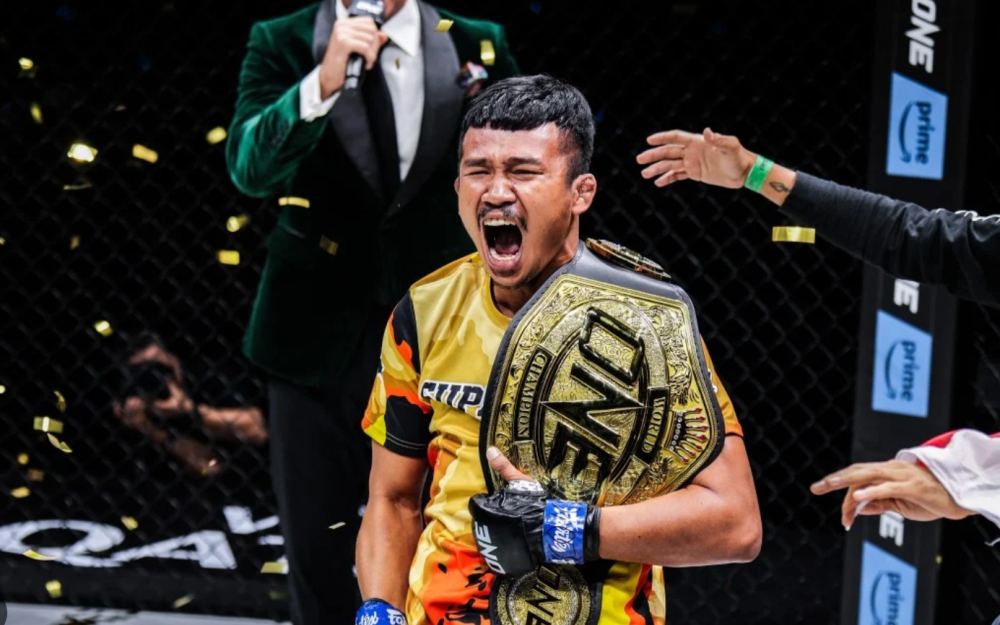
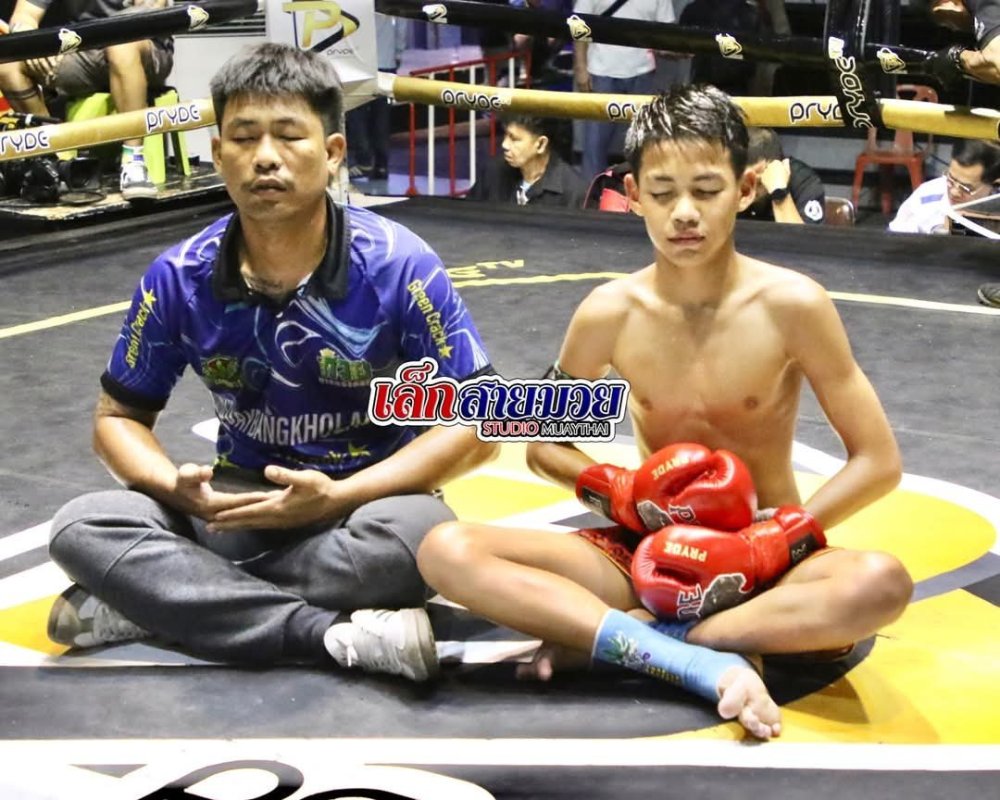
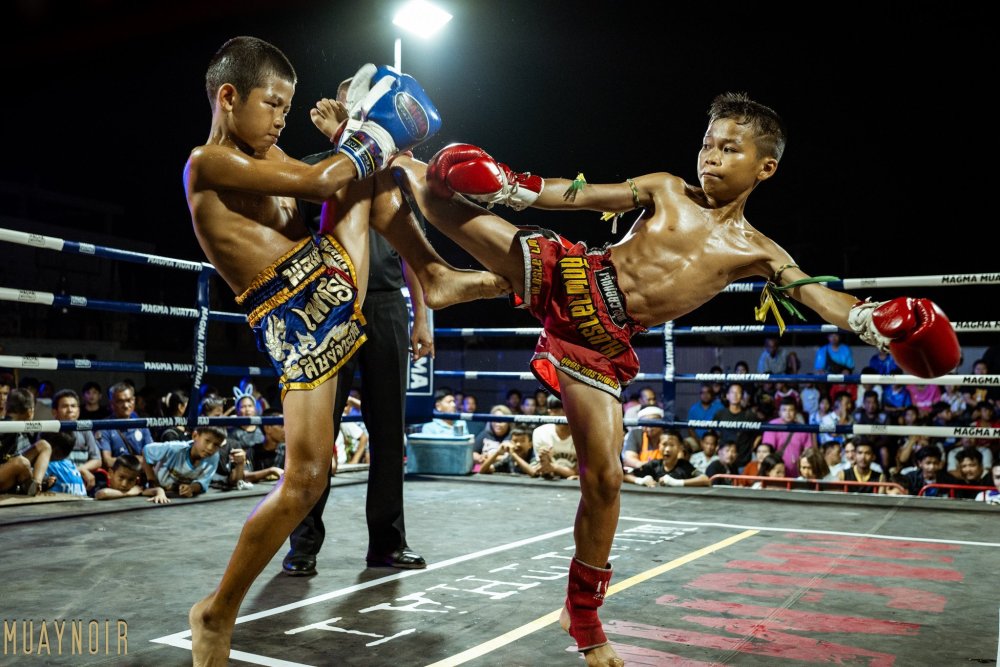
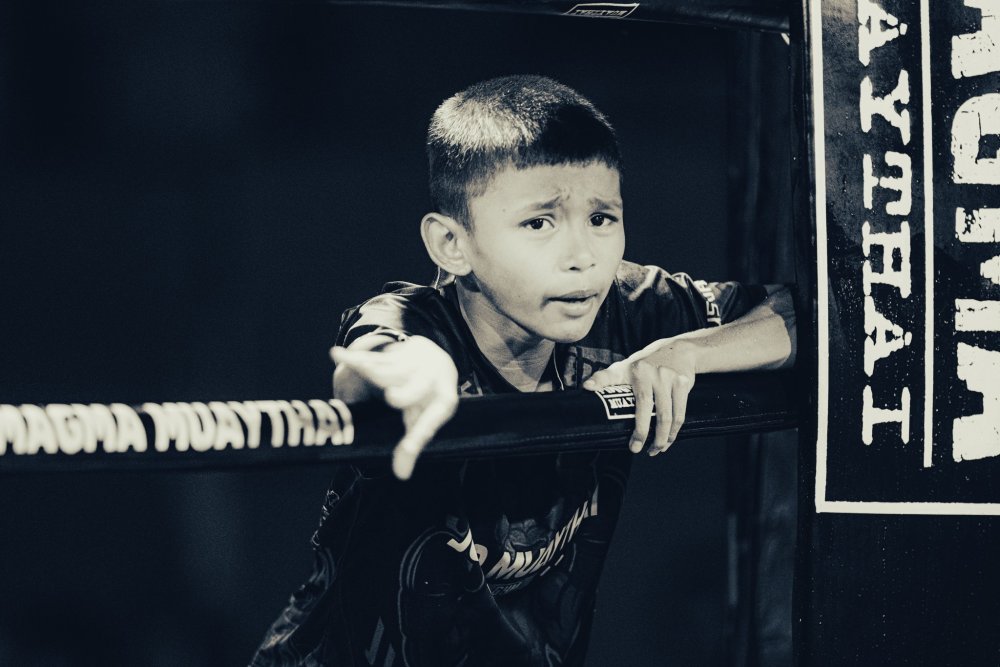
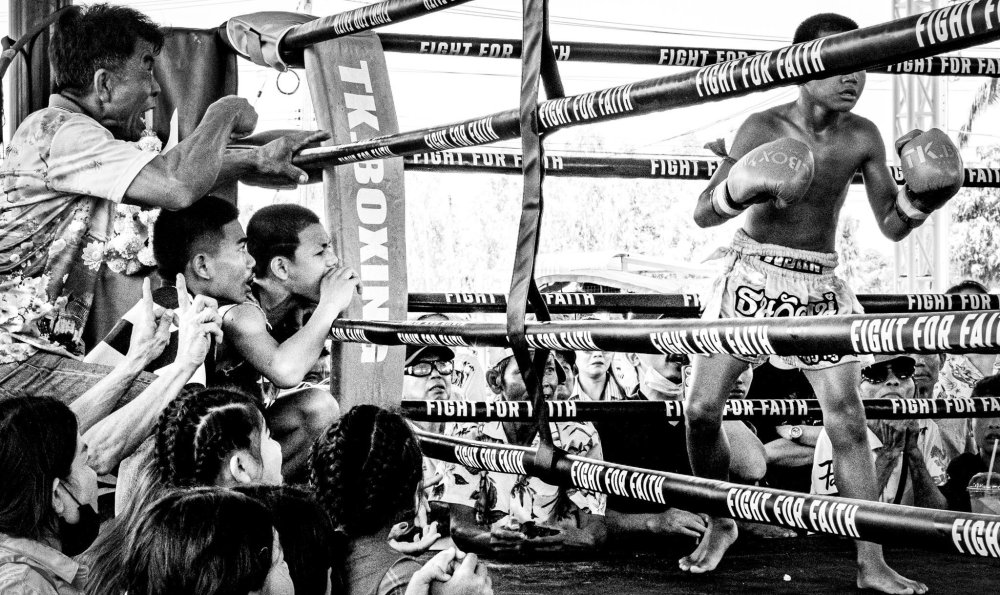
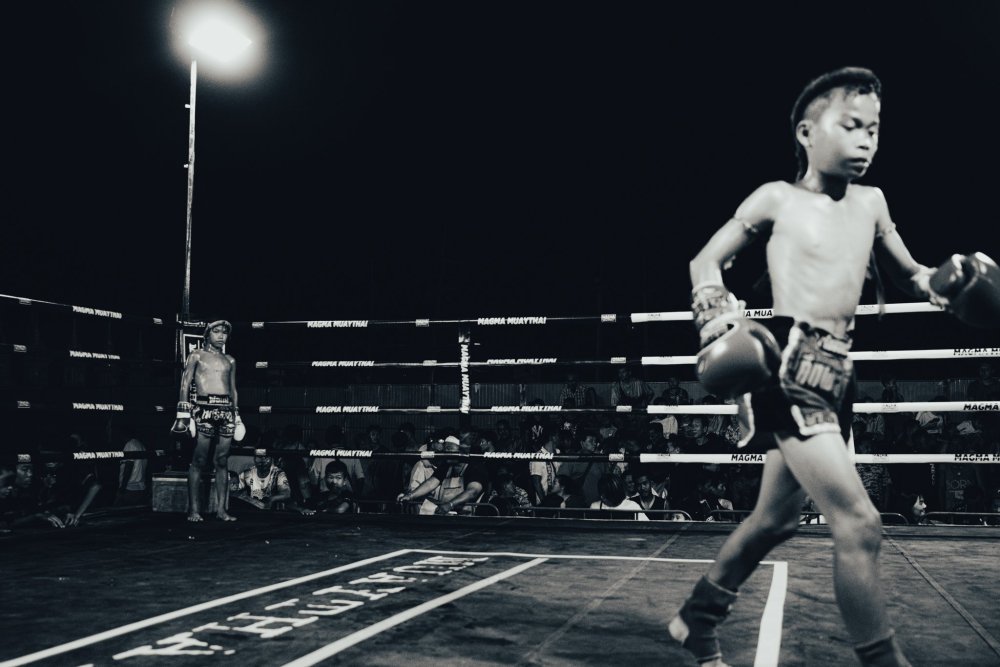
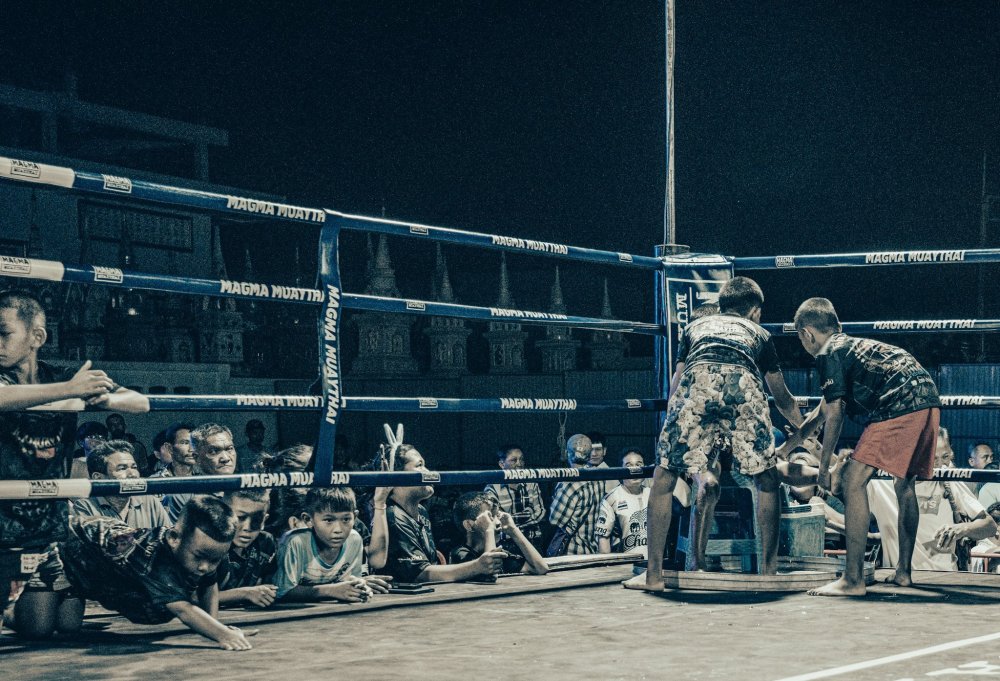
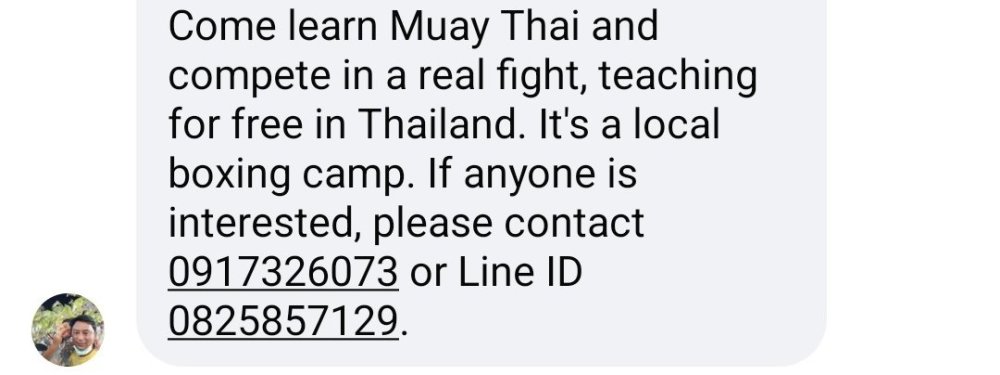
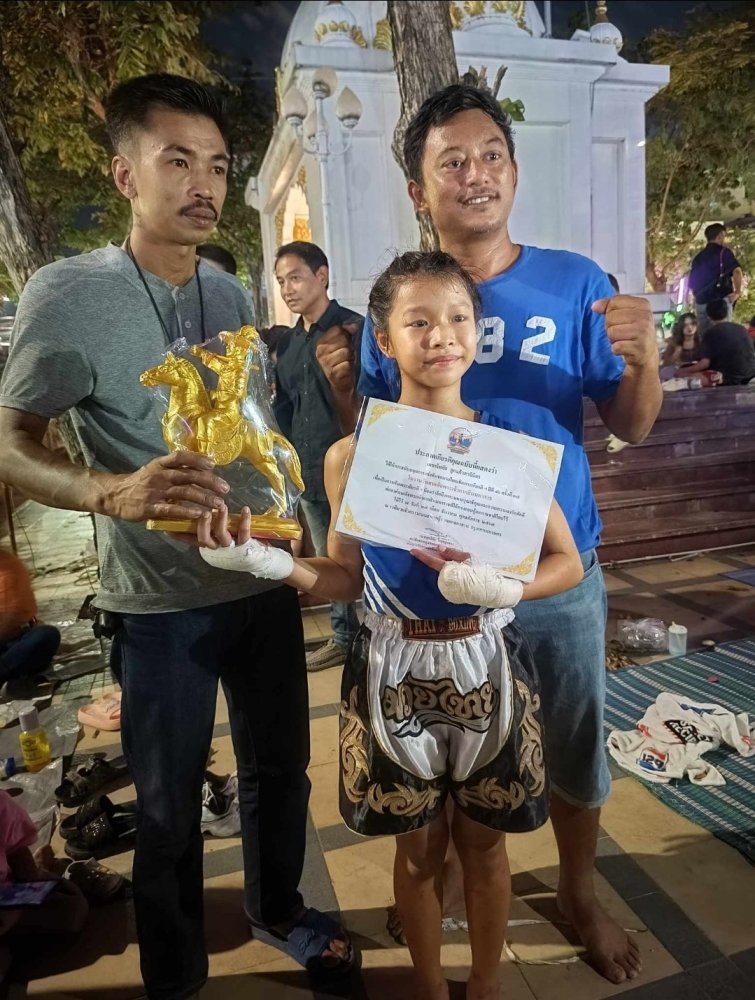
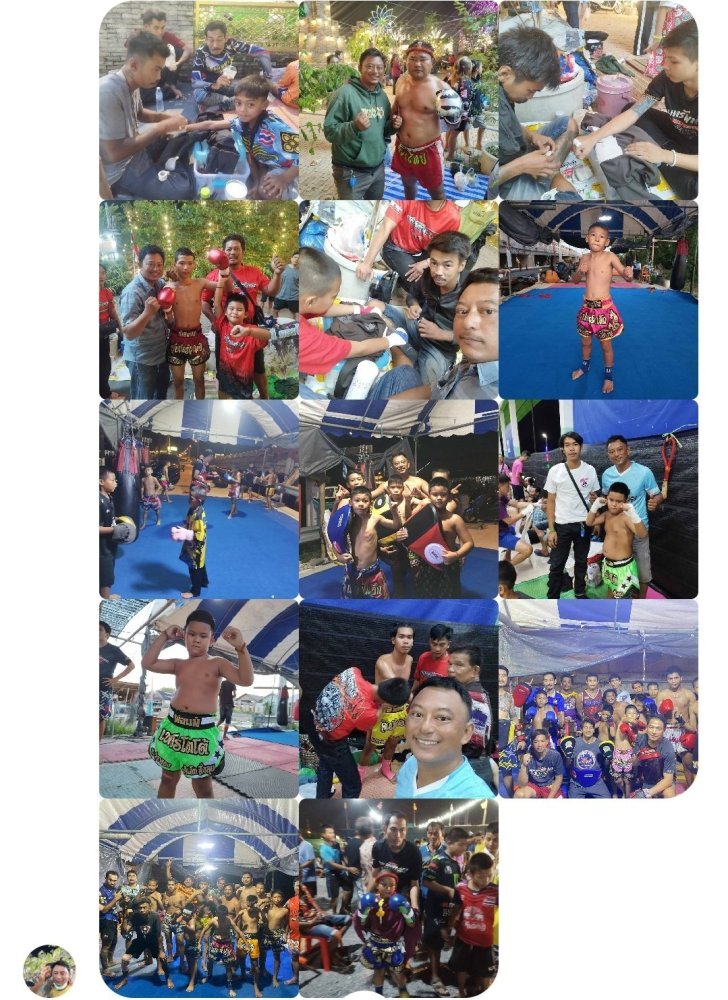
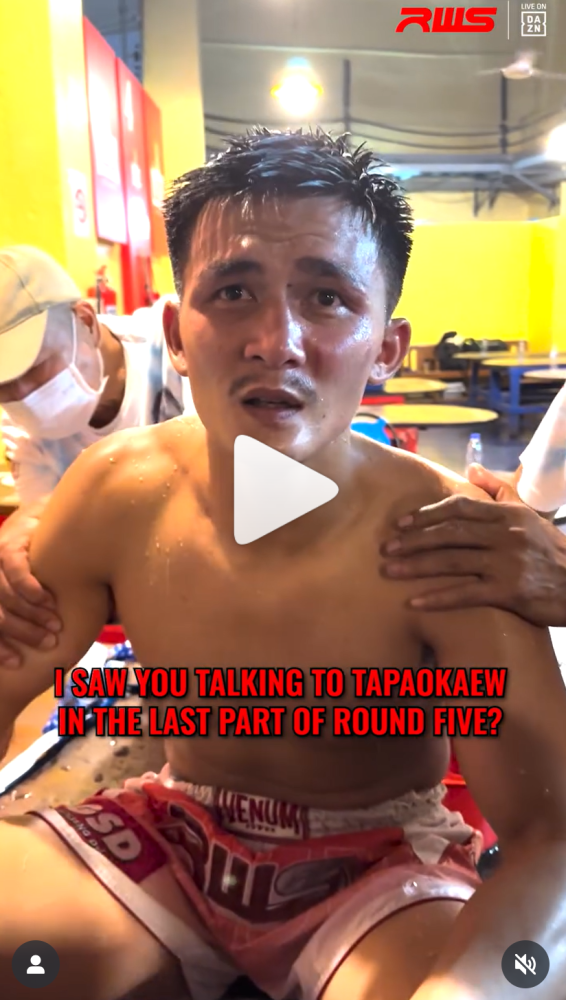
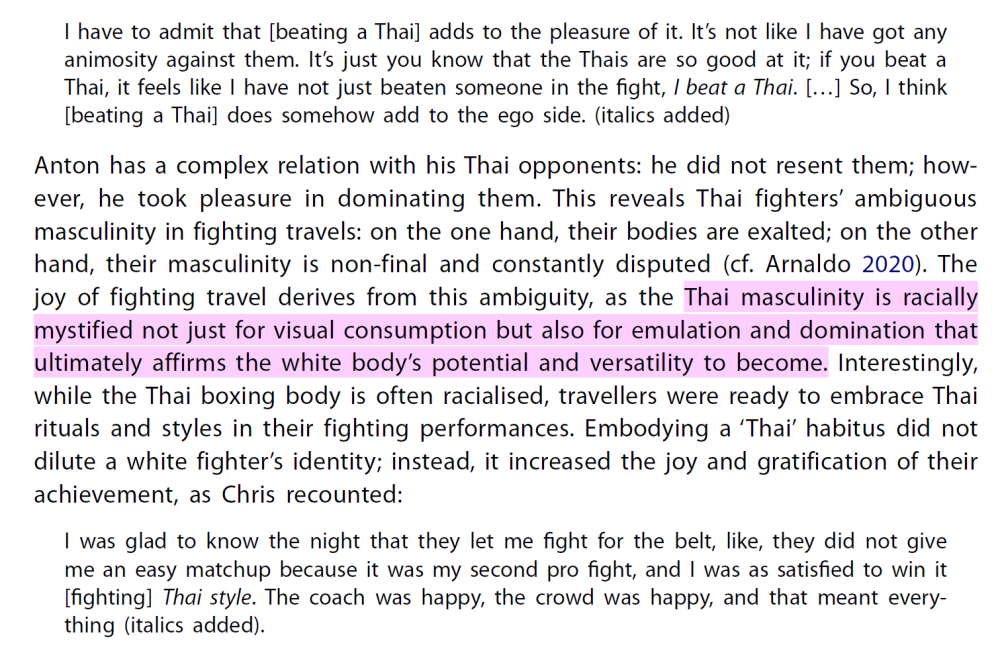
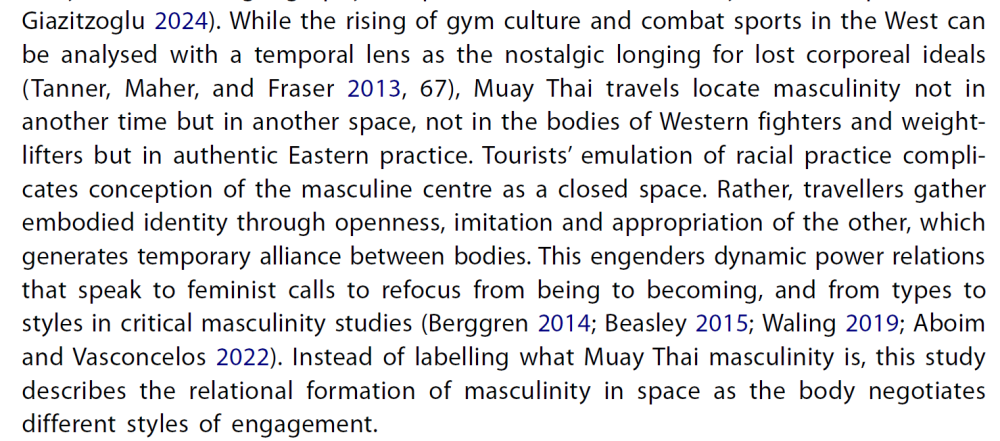

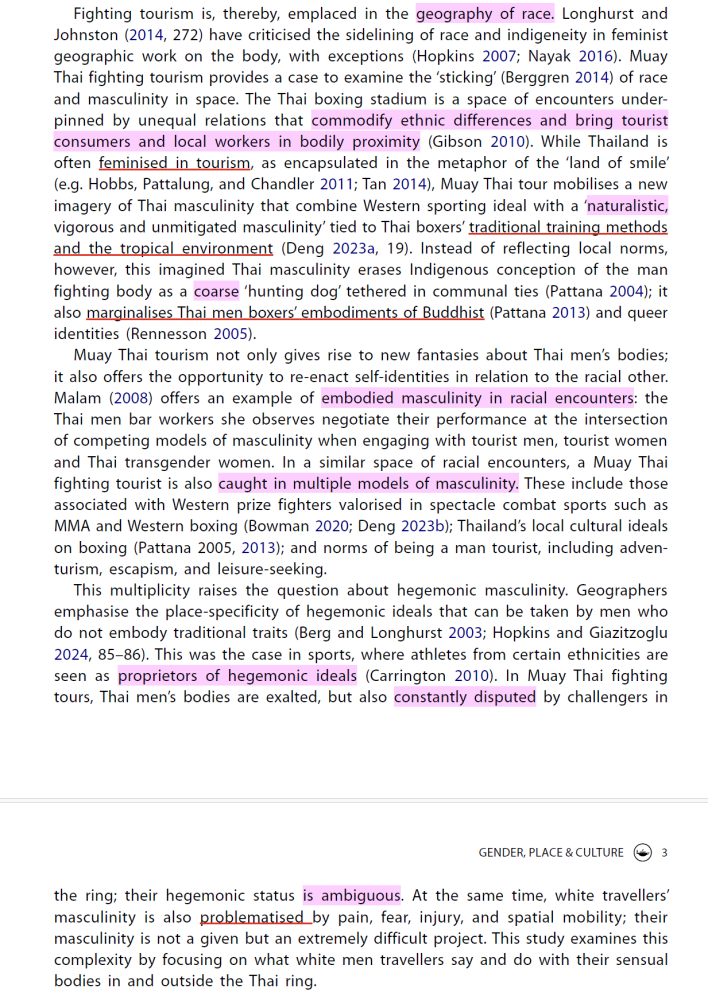
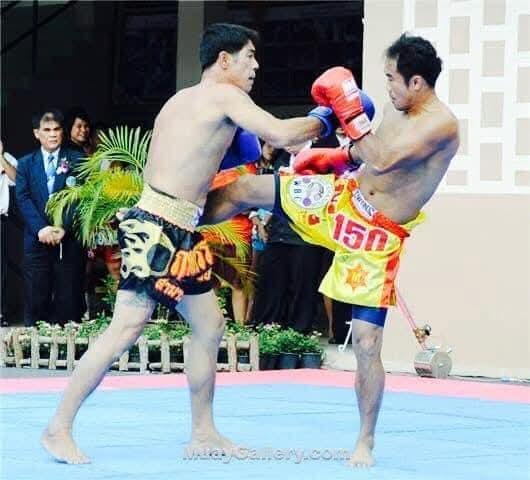
.thumb.png.213f128a2f0c1f0952e38a74475a2460.png)
